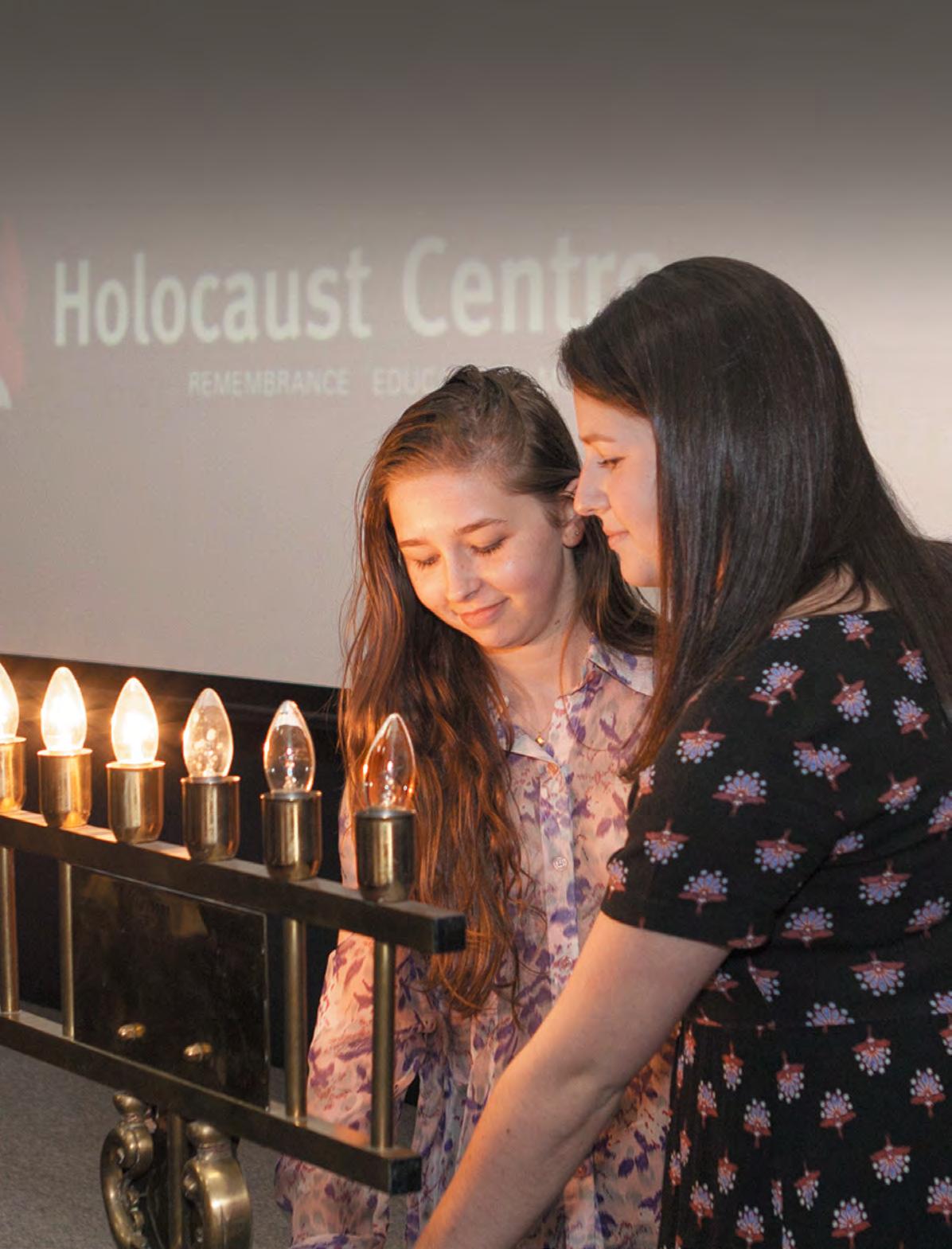
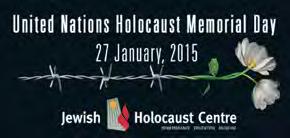
April 2015
Holocaust Centre Registered by Australia Post. Publication No. VBH 7236 The magazine of the Jewish Holocaust Centre, Melbourne, Australia
Jewish
JHC Board:
President: Pauline Rockman OAM
Immediate Past President:
Shmuel Rosenkranz
Secretary: Elly Brooks
Treasurer: David Cohen
Members: Goldie Birch, Allen Brostek, Alex Dafner, Abram Goldberg OAM, Sue Hampel OAM, Paul Kegen, Helen Mahemoff, Viv Parry, Mary Slade, Willy Lermer
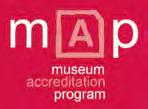
JHC Foundation:
Chairperson: Helen Mahemoff
Trustees:
Nina Bassat AM
Joey Borensztajn
Allen Brostek
David Cohen
Jeffrey Mahemoff AO
Patrons:
Professor Yehuda Bauer
Mrs Eva Besen AO
Mr Marc Besen AO
Sir William Deane AC CBE
Sir Gustav Nossal AC CBE
Mrs Diane Shteinman AM
Steven Spielberg
JHC Staff:
Warren Fineberg, Executive Director
Lisa Phillips, Director of Education
Jayne Josem, Curator, Head of Collections
Michael Cohen, Director of Community Relations
Reuben Zylberszpic, Development Manager
Phillip Maisel OAM, Head of Testimonies Project
Robbie Simons, Testimonies Assistant
Coordinator / Audio-visual Producer
Tammy Reznik, Education Officer
Anatie Livnat, Education Officer
Rae Silverstein, Volunteer Coordinator
Claude Fromm, Assistant Archivist
Daniel Feldman, Project Administrator
Julia Reichstein, Librarian / Information Manager
Lena Fiszman, Office and IT Manager
Tosca Birnbaum, Reception
Centre News Editorial Commitee:
Editor: Ruth
The Jewish Holocaust Centre is dedicated to the memory of the six million Jews murdered by the Nazis and their collaborators between 1933 and 1945.

We consider the finest memorial to all victims of racist policies to be an educational program which aims to combat antisemitism, racism and prejudice in the community and fosters understanding between people.
CONTENTS
On the cover:
Tiah Gordon and Sarah Reed, United Nations Holocaust Memorial Day, January 2015
Photo: Zina Sofer
This publication has been designed and produced by Izigraphics Pty Ltd www.izigraphics.com.au
13–15 Selwyn Street
Elsternwick Vic 3185 Australia
t: (03) 9528 1985
f: (03) 9528 3758
e: admin@jhc.org.au
w: www.jhc.org.au
OPENING HOURS
Mon–Thu: 10am–4pm Fri: 10am–2pm
Sun & Public Hols: 12pm–4pm
Closed on Saturdays, Jewish Holy Days and some Public Holidays
Disclaimer: The opinions expressed in Centre News are those of the authors and do not necessarily reflect those of the magazine editor or editorial committee. While Centre News welcomes ideas, articles, photos, poetry and letters, it reserves the right to accept or reject material. There is no automatic acceptance of submissions.
JHC Centre News
Mushin Michael Cohen Lena Fiszman Jayne Josem Pauline Rockman OAM Reuben Zylberszpic Moshe Ajzenbud (Yiddish) From the President 3 Editor’s letter 3 D irector’s cut 4 Education 5 Seventy years after the liberation of Auschwitz: keeping the memory alive 6 M y lifelong belief in humanity: saved by the kindness of others 8 Esther’s story 9 Effects of the Holocaust on Jewish child survivors: a review of their traumas and after-effects 10 Escape from the Thessaloniki Ghetto 12 Memories of Ordinary People: Revisiting Kitia Altman’s memoir and the issues it raises 13 Genocide in Rwanda: historical overview and personal reflections 14 Facing the past 16 The consequences of the Nazi policy of confiscating Jewish-owned artworks: a Melbourne connection 18 Remembering Kristallnacht: a personal reflection 20 As far away as possible: Melbourne Holocaust survivors tell their stories 21 Book review: Gazing at the Stars 23 E xploitation of the Holocaust 24 JHC Film Club 25 JHC Social Club 26 Friends of the Jewish Holocaust Centre 2 7 Seen around the Centre 28 Stories from the Collection 3 0 New acquisitions 31 Community news 3 2
FROM THE PRESIDENT
Pauline Rockman OAM

Iam thrilled that the Jewish Holocaust Centre’s 30th anniversary year has been an extremely intensive and rewarding one. Recent events include Facing the Past, the Simon Shiff photographic exhibition of our survivor guides that paid tribute to Holocaust survivors who have volunteered their time to make the Centre the vibrant, awardwinning museum and educational institution it is.
The year included a stirring visit by the Mayor of Thessaloniki, Yiannis Boutaris. Mayor Boutaris wore a yellow Jewish star at his mayoral inauguration in protest against the election of a member of the neofascist Golden Dawn party to the city council. He is a very special person with a genuine sense of the place of the Jewish people in his people’s heritage. He is dedicated to remembering and celebrating the Jewish community, as well as revitalising a Jewish presence in his city, and stands strongly against the neo-fascism and antisemitism rising again in Europe and indeed, elsewhere.
Last December another group of committed people completed
EDITOR’S LETTER
the comprehensive Holocaust education program conducted at the Centre. Some are now working as guides in our museum, for which we are most grateful.
Our Centre is full of passion and dedication, committed to remembrance, commemoration, education and much more. Volunteering is at its core and our dear Holocaust survivors and all our other volunteers are the heart and soul of the Centre. Volunteering can sometimes be challenging, but we must take pride in the positive impact we make on those many thousands of school children and members of the general public who pass through our doors. As well as our museum guides, the other volunteers who work at the Centre contribute in different ways – in the archives and testimonies departments, the office and the library, working on Centre News and on the Board.
This year is shaping up to be another full and productive year. On 27 January we commemorated United Nations International Holocaust Memorial Day. The commemoration, organised annually by the Jewish Holocaust Centre, is held in accord with the November 2005 resolution of the UN General Assembly proclaiming 27 January, the day in 1945 on which Auschwitz was liberated, as an annual day of remembrance. This year’s theme was ‘70 Years after the Liberation of Auschwitz: Keeping the Memory Alive’. Professor David Mittelberg
delivered the keynote address, and we heard testimony from Mrs Eva Slonim, a child survivor who was liberated at Auschwitz. You can read part of Professor Mittelberg’s address and a review of Eva Slonim’s recently published memoir in this edition of Centre News
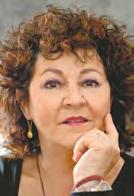
Two important anniversaries take place this month: the centenary of the Armenian genocide on 24 April, and the centenary of the Allied landing at Gallipoli the following day. Another significant commemoration, on 16 April, is Yom Hashoah Vehagevurah, marking 70 years after the end of the Holocaust.
We are working steadily towards expanding the Centre. We have held a competition to produce a vision for our new building and are delighted to announce that architect Kirstin Thompson is the winner. The results of the competition are on display in the Board room.
The process of moving from vision to reality will involve much work and fundraising. I am confident that, with our fantastic Board and wonderful staff team led by Warren Fineberg, we shall achieve our aims. In our ever-changing world it is imperative that we move forward to ensure that we continue the work our founders began.
The Jewish Holocaust Centre’s 30th anniversary year has just finished, and we complete our coverage with images from Facing the Past, Simon Shiff’s compelling exhibition
of portraits of Holocaust survivors that was recently held at the Centre. A powerful theme of the four survivor stories in this edition is the role of non-Jews, both those formally recognised as Righteous Among the Nations and others who helped Jews during the Holocaust. Kitia Altman, Esther Bordowicz, Maria Curtis and Phillip Maisel may not have survived without the German, Polish and Greek nonJews whose selfless acts of courage put themselves and their families in great danger. We shall continue this theme in the next edition of
Centre News when we feature the exhibition Besa: A Code of Honour that recently opened at the Centre. I hope you will make time to see these amazing photographs and stories of Muslim Albanians who saved Jews during the Holocaust.
Dr Paul Valent has written a thoughtful analysis of the effects of the Holocaust on child survivors, a group he describes as the most vulnerable and traumatised, as well as the most unrecognised. I commend this article to you, as well as the many others in these pages.
JHC Centre News 3
Ruth Mushin
Warren Fineberg
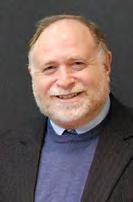
For a third year the Jewish Holocaust Centre (JHC) has had over 20,000 school children attending our education programs and over 10,000 visits from the general public. With approximately 100 events throughout the year, including a Holocaust education program, two temporary exhibitions and our regular Social Club, our resources are stretched to the limit.
To maintain an operating museum, education programs and accommodate our many public events and programs, we raise funds through donations and grants. The JHC Foundation generously supports the Centre, making a significant contribution to salaries and information technology. Friends of the JHC host a range of activities to raise funds for special projects such as the upgrading of the Mareijn and Smorgon auditoria sound systems. The Bequest Program, for those who wish to leave a lasting legacy to the Centre, also provides significant support. I am pleased to report that the Centre has begun 2015 in a positive financial position.
The JHC contact database has been developed to provide accurate and efficient listings for our postal and internet communications, an essential tool in today’s environment. Good progress has also been made with the development of a public ‘Portal’, an electronic window to allow access to all the Centre’s museum and collection databases. We are grateful to the Helen McPhersonSmith Trust for supporting this program. The Trust’s support has also enabled us to extend our library to become a research centre. We are now in our third and final year of this project, and visitors to the Centre can
experience a new research/library space, a foreign language library annex and a trial version of the Portal facility.
In 2014 we welcomed a number of new part-time staff members. Dr Anna Hirsh works as Collections Archivist, and Ari Leski and Adam Thalhammer assist with database operations and general administration.
On any week day we have between 30 and 50 volunteers and staff members working at the Centre. The majority are volunteers who invest essential work hours to keep the Centre operating. Guiding, assisting with the Testimonies Project, library and the collections and archive department, meeting and greeting at the front desk and providing administrative support demonstrate the range of work undertaken. In recognition of their contribution some 20 volunteers were presented with an elegant glass shard in thanks for their service.
The JHC Board and Executive, also volunteers of course, meet on a monthly basis and are responsible for guiding the direction of the Centre in the short term, and for setting their eyes on future developments. In providing for the projected growth of the Centre over the next two or more decades, their special focus is on funding and asset development. At the Gala Event held last year, plans for a new building were outlined and significant funds collected by the Centre and the JHC Foundation in support of operations and future expansion.
In recognition of our currently active survivor guides and volunteers, the Centre presented a strong and confronting exhibition entitled Facing the Past. The project team for the exhibition included photographer Simon Shiff, Curator Jayne Josem, Development Manger Reuben Zylberszpic and others. We are currently presenting Besa, an exhibition recognising the courageous stance of Albanians – a predominantly Muslim European state – during the Holocaust, when Albanian people and organisations protected Jewish Albanians and refugees from Nazi persecution.
The term Besa refers to ‘an act of honour’, - an act whereby one can entrust one’s life to another.
Where possible, the JHC develops digital exhibitions hosted on our website www.jhc.org.au. The exhibition, titled Lodz: Strength and Hope is a fine example of an online interactive exhibition. Using documents and photographs rescued after the Holocaust, it presents a rich picture of ghetto life during the Nazi occupation. This exhibition was funded by the late Pincus Wiener in memory of his brother Bono, one of the founders of the Centre.
Our Education Department has developed ‘Hide and Seek’, a new Middle School program, following a very successful pilot program in 2014 funded by Gandel Philanthropy. This exciting program offers age-appropriate educational experiences, allowing students to explore the many aspects of the Holocaust safely through a carefully structured program. The senior student program has also been updated, with further development to take place over the forthcoming years.
Looking forward to developments this year, a small team lead by Board member Sue Hampel is examining the research section of the Centre with a view to offering greater access to academics to work at the Centre and to provide public programs. Michael Cohen, who has recently completed his PhD, will head this area along with his work as Director of Community Relations.
The JHC Social Club coordinated by Barbara Sacks has an outstanding list of speakers for 2015. I do hope readers will take advantage of attending the monthly events to hear the speakers and enjoy the social gathering.
JHC Centre News 4
DIRECTOR’S CUT
EDUCATION
Lisa Phillips
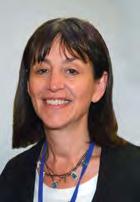
As we commemorate 70 years since the Allied troops liberated the concentration camps, it makes one ponder the future of Holocaust education as the distance between the events and the present becomes even greater. As educators we constantly question how we transmit to students the dangers of hatred, prejudice and antisemitism, and to teachers the importance on placing the Holocaust as a worthy topic in the crowded curriculum. Curriculum changes are being discussed yet again. However, for the moment, the Holocaust still stands as part of the Year 10 History course. Holocaust texts, such as Night by Elie Wiesel, are still popular with English teachers, but how the Holocaust is taught is indeed another question, and a constant challenge.
This challenge to create better Holocaust educators is being met at the International School at Yad Vashem, where seminars are conducted for teachers from over 50 countries. During late December 2014–January 2015, I was privileged to participate in the 18-day Gandel Holocaust Course for Australian Educators, due to the generosity of the Alexander Israel Ivany Scholarship. I was part of a group of 30 teachers from all Australian states and territories, including regional areas and capital cities. In my position as a Director of Education at a Holocaust centre, it is obvious why I was so motivated to attend the course, but I was intrigued why these non-Jewish teachers were so interested to give up three weeks

of their precious holidays to attend. From our first introductions it was clear that all these teachers were exceptional in their dedication to their profession, their level of intelligence and their motivation to learn more about the Holocaust. What makes the course at Yad Vashem so special is hard to pinpoint, as it is not one aspect but the combination of a myriad of factors. For instance, to be able to devote nearly 18 days of uninterrupted learning was a luxury. Then there is the thorough lecture program, with high-calibre lecturers. Professor Robert Wistrich is a world expert on antisemitism; Dr Gideon Grief spoke to us about ‘the Persecution of the Jews in Nazi Germany’; Dr Rachel Perry on ‘Nazi Aesthetics and the Campaign Against Modernism’; and Professor Yehuda Bauer on ‘The Unprecedentedness of the Holocaust in an Age of Genocide’.
The Yad Vashem course is carefully structured not only to impart knowledge, but to ensure that the information can then be thoughtfully delivered in the classroom using the pedagogical philosophy and support materials created by Yad Vashem. As one participant perceptively stated, the course not only preaches the pedagogy but actually practises it too.
Following are the main themes of the course: the importance of examining life before 1933 to highlight the richness of Jewish life before Jews became victims of Nazi ideology; exploring how people lived in the world of chaos; personalising the victim; and the aftermath of the Holocaust. Too often the Holocaust is taught at schools in a couple of lessons as an addendum to a study of the Second World War, beginning with the ghettos and ending with the extermination camps, so the Yad Vashem approach was a major change in thinking for many of the teacher-participants.
The course also emphasised the importance of an age-appropriate curriculum and not traumatising students through horrible images or moral dilemmas before they have the social and intellectual maturity to manage these challenges. In other words, as educators we have a responsibility to ensure students are ‘safely in and safely out’, without destroying their belief in humanity or the world around them as we study such a dark period. These kinds of pedagogical discussions that took place during the course are essential to effective Holocaust education and indeed key to the Yad Vashem approach that makes the course so special.
Being able to experience the vibrancy of Jewish life in Israel also adds a dimension to make the Yad Vashem course so different. Further, just being at Yad Vashem with access to the facilities and museum over the course, rather than just visiting for the day, was in itself incredible. To be able to visit and revisit the museum and understand the construction of the exhibition was valuable and rewarding. To wander in the grounds, to take in the views, to visit the art gallery, to explore the pedagogical materials and to meet experts in their fields was indeed a rare opportunity. It was also a privilege to share this experience with the other Australian participants and to hear how teachers were planning to utilise and implement their newfound knowledge and learning as part of their projects. The enthusiasm of the group had an energising impact and the level of bonding and networking between participants was also another key element that made the experience unique. It also made me feel proud of the work we do at the Jewish Holocaust Centre in our efforts to meet the challenges 70 years since the liberation of the camps, to create and offer excellent Holocaust education to schools and the wider community.
JHC Centre News 5
Seventy years after the liberation keeping the memory alive
This is an extract from the keynote address delivered by Professor David Mittelberg at the annual United Nations Memorial Day commemoration held on 27 January 2015 at the Jewish Holocaust Centre. Professor Mittelberg addressed three circles of memory: the personal, the communal, and the global in an age of post-Holocaust terror. This extract focuses on personal memory. The complete address is available in the Jewish Holocaust Centre library.
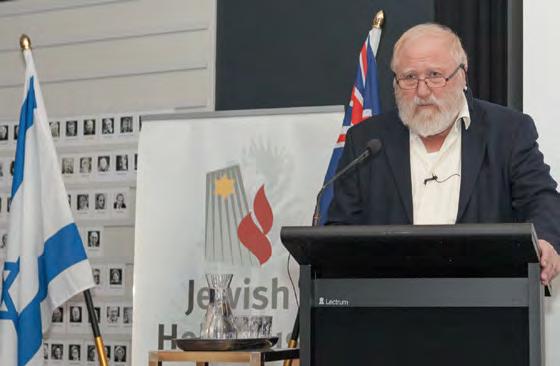
With your permission, I wish to dedicate this presentation to the memory of the following survivor parents: to my parents, and the parents of my sister, Rachel Caplan, who is here this evening –Yisrael Ya’akov (Ryszard) Mittelberg from Warsaw and Melbourne, and Leah (Lola) Marmelstein Mittelberg from Warsaw and Melbourne; and to the parents of my wife, Shoshana, – Harav Ya’acov Kotlar from Lydda and Perth, and Esther Kruglanski Kotlar from Knishin and Perth.
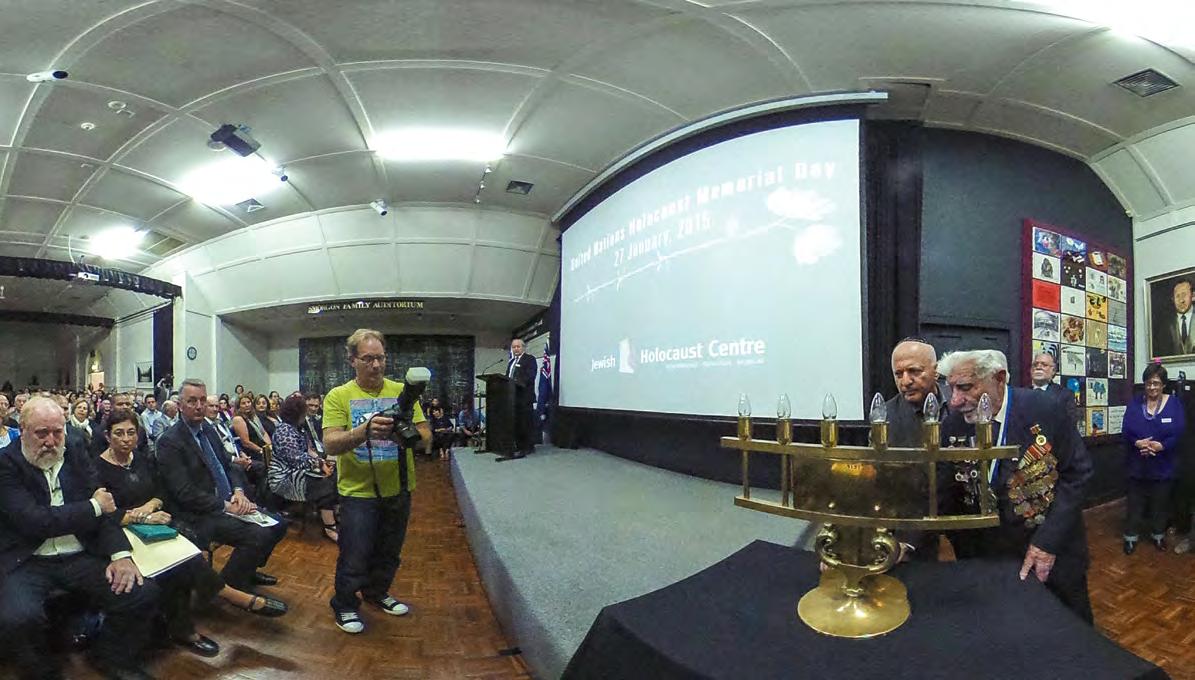
Each of these Jews survived the Holocaust in a different way. My father survived through the horrific concentration camps of Treblinka, Maidanek, Skarziska, Buchenwald and Matthausen over two years, while my mother survived as a refugee from Warsaw, in a Russian kolkhoz. Shoshana’s father lived out the war as a young rabbi who saw the Jews burned alive in Baranowicz and then joined the partisans led by the Bielski Brothers, while Shoshana’s mother was pushed from the deportation train by her own
mother and survived alone in the forests.
My late father of blessed memory was apparently one of only 200,000 concentration camp survivors all told who, according to Professor Yehudah Bauer, survived the destruction of the Warsaw Ghetto and two years of the death camps of Treblinka, Maidanek, Skarziska, Buchenwald and finally Matthausen.
My father’s oral testimony was in our home and in our community. At the Shabbat table and the Pesach seder table, survivors sustained survivors. There, Yiddish in community life and its cultural institutions was the oxygen of cultural renewal and personal sustenance.
My father delivered his own formal hand-written recorded testimony to an interviewer of the Jewish Historical Institute Warsaw (or perhaps it was Lodz) on 12 January 1946, barely seven months after being liberated at Matthausen. This Yiddish hand-written testimony was discovered by my son Yoel, who brought it from Warsaw only in 2010, on a memory stick.
What does it tell us? It tells us of civil resistance in the Warsaw Ghetto, and a battle for physical survival in bunkers the Jews themselves constructed in their own houses. They struggled for personal meaning and morality but never contemplated surrender. Separation from wife and son on the platform at the gates of Treblinka, with 507 other Jews (they always knew the number) who were transported to Maidanek and, in ever-reducing numbers, they continued on – for my
JHC Centre News 6
Professor David Mittelberg
liberation of Auschwitz: David Mittelberg
bitterly. On the other hand, I imagined that the world must have improved and that all doors would be open to us. Unfortunately none of this eventuated. The world had changed but little.
How did my father already know that the world had changed but little? We, the generation of the sixties, were sure that the Holocaust was over and needed to be respectfully remembered and guarded – but could it be repeated?
The question to be asked, with respect to personal memory, is whether memory can be handed down to the third and fourth generations in particular. In answer to this question, I share with you a letter from my own daughter Esti who, as a 16-year old Israeli, was in Poland as part of an Israeli educational school program. Sadly, Esti never met my father who had passed away before she was born, but Esti held in her hand his manuscript and walked in his footsteps, in Warsaw and at Maidanek.
Esti wrote:
Grandfather, you are my hero — you who never lost hope in life, who was victorious over the Nazi oppressor and who showed the world that Judaism would never be buried in the soil of Poland. I listen to my heart and it longs to meet you, to ask you questions even without receiving answers.
father a two-year journey of terror, anguish, sorrow, grief, hard labour, illness and barely physical survival.
It is with the following words that my father concluded his testimony,
On the first of May 1945, the block elder, a Russian guard, came into our barrack with the announcement that a ceasefire had been signed. Our joy was too overwhelming for us to grasp the meaning of what was happening. True, we had waited for this moment, yet it still had caught us by surprise. Soon inmates from the other Matthausen camps came to inform us of the good news. Everything changed very quickly. The leadership of the camp tried immediately to please the inmates. While shooting was still going on, news came that the Americans were approaching and that the Red Cross would soon take over the camp. Our joy was unimaginable, yet did not cause us to forget about our stomachs. We broke open the store rooms and prepared whatever food there was. On the sixth and seventh of May the Americans arrived. We almost went out of our minds. Only then did we feel secure and free.

By a stroke of luck the Americans walked into our barrack, transported us and administered blood transfusions that revitalised us a little. I was given six consecutive blood transfusions, immediately improving my condition.
Our joy was nevertheless marred by the fact that, despite all human efforts, many people died after the liberation. The Americans showed a great deal of selflessness; they worked day and night. We were living temporarily in tents and when on one occasion a storm broke out and threatened to blow away the tents, the American soldiers literally held up the tents with their hands. I now had time to reflect upon my situation while lying in one of those sick beds. On the one hand, the awareness that my close ones were all dead affected me deeply and I repeated Kaddish after them and wept
Now on the seventh day of my trip to Poland, everything is coming out of me; perhaps I have finally understood — certainly not completely. I want to thank you for opening old wounds so that I may read and learn the stories in the hope that I will not have to deal with wounds like these. Grandfather, you are the stable root that has been plucked up from its place, stubbornly returning to give life to its flowers. To your credit our family is flowering in a range of colors not forgetting the earth from which it is nourished.
Grandfather, even though I never met you, I feel longing for the man who succeeded in ascending from the depths of the abyss to beyond the expanse of freedom.
Grandfather, thank you for not losing hope and for causing me to follow your footsteps. I believe that I now understand the meaning of a united supportive family, the basic morality of man wherever he may be, and, essentially, the powerful will to live — the feeling that I will not break down before the obstacles placed before me and that I will guard my true self and I will not allow others to trample tradition and the Jewish people.
Grandfather, wait for me where you are — and one day we will meet.
Rest in peace,
Your loving grand-daughter, Esti
Warsaw 2001
And if you ask me whether memory can be kept alive, I say unequivocally that it can.
Professor David Mittelberg grew up in Melbourne and now lives in Israel. He has been a member of Kibbutz Yizreel since 1972. He is Professor for Sociology and Chairman of the Steering Committee of the International School of Oranim Academic College of Education in Israel and Senior Research Fellow at the Institute for Kibbutz Research at Haifa University. He is also Adjunct Research Associate in the Australian Centre for Jewish Civilisation at Monash University.
JHC Centre News 7
My lifelong belief in humanity: saved by the kindness of others
Phillip Maisel OAM
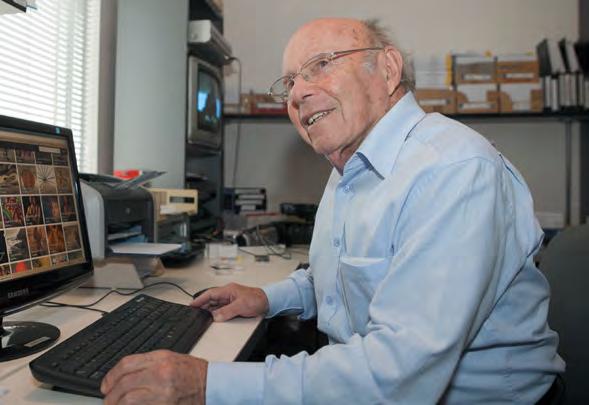
Phillip Maisel was born in Vilna (Vilnius), Lithuania in 1922 and grew up in a comfortable family with his twin sister Bella and older brother Josef. In 1941, the Nazis occupied Lithuania. The Jews of Vilna were forced into an overcrowded ghetto where food was scarce, disease was rife and they were in constant fear of being killed by the Nazis. Phillip was involved in the resistance movement. In September 1943, the ghetto was liquidated and Phillip was deported to Estonia to be imprisoned in a hard-labour camp. In August 1944, as the Soviet army advanced, Phillip was sent to Stutthof concentration camp in Germany, then Dautmergen and later Frommern, from where he was sent on a death march. He was liberated by the advancing French army in April 1945. Phillip, Bella and Josef were the only members of their family to survive the war. In 1949, Phillip and Bella migrated to Australia to begin a new life. As one of the few thousand Vilna Jews who survived, Phillip believes it is his responsibility to record the events of the Holocaust for future generations. He heads the Jewish Holocaust Centre’s testimonies department, named in his honour the Phillip Maisel Testimonies Project.
As a prisoner of the Germans in the ghetto and later in labour and concentration camps, there were many times when I was helped to survive by the kindness of others. My experience in Estonia is just one example that reinforced my lifelong belief in humanity ...
In the ghetto, it was life-saving to have a job that was important to the Germans, so my father decided that I should work as an automotive electrician. He had a friend at HKP (Heereskraftfahrpark) and told him that I was an automotive mechanic, even though my only qualifications were an interest in cars – of which there were few in Vilna – and some study of electricity in school physics! Although I was given menial work, I studied car mechanics in the ghetto library and taught myself to do repairs, so that in six months I was able to call myself an automotive electrician.
In September 1943, the ghetto was liquidated and I was sent to a slave labour camp in Estonia, where the Germans had discovered shale rock from which they were able to produce oil. Jews from the Vilna Ghetto were deported to Estonia to work in the mines. When the SS enquired if there were any motor mechanics, I came forward and became part of a mobile garage, travelling from camp to camp to repair vehicles. Our team consisted of 30 Germans – all Nazi party
members – and 16 Jews. The Jews worked very long hours and were starving. Our rations consisted of one piece of bread in the morning, soup for lunch, and more watery soup, with maybe a piece of potato floating in it, in the evening. I thought constantly about food and escape. However, my work was some relief from the horror of camp life as we were not especially maltreated, we were given overalls which provided some warmth, and we could collect any scraps of food left by the Germans.
One day, coming back from the barracks in a blinding snowstorm, I hung back from the SS guard and my colleagues and ran away. I headed for the little village I knew was to the left of the camp, and when I found it, I knocked on the back door of one of the houses. The woman who answered knew immediately where I had come from, but took me in saying, ‘You must be hungry.’ I ate four loaves of bread and some fish, and drank milk. I stayed for two hours until the storm subsided but, as it was dark and I had nowhere else to go, I was forced to return to the camp.
At the gate of the camp I told the Lithuanian SS guard the truth about getting lost, being fed by a woman, and returning to the camp when the weather improved, but I did not tell him that I would not have returned if I had found a means of escape. That guard was on duty every week on Thursday evenings and, instead of punishing me by severe beating which could endanger my life, he told me that I could go out again when he was on duty if I promised to return. I returned to that woman’s house every week for several weeks until one day, we heard the bells of a horsedrawn sled outside. The woman’s face turned white and I immediately ran out the back door. I never went back, for fear of risking her life and mine.
After that, I used my weekly outings to visit farmers to ask for food. The death rate at the camp was enormous, and I used a blanket of a prisoner who had died to trade for food. Although not one farmer bought a blanket, most gave me a piece of bread.
This went on for several months, and I have no doubt that the kindness of others helped to keep me alive. The SS guard, the woman who fed me and the farmers who gave me bread could have easily turned me in, but they all helped me to survive, risking their own lives in doing so. They and others showed the precious spark of humanity that should be in every human being.

8 JHC Centre News
Phillip and Bella Maisel
courage and the power of the internet
Rosa Segal
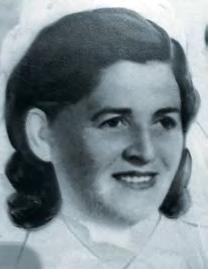
Estera (Esther) Bordowicz was born in the Polish town of Kalisz in 1917 and died in Melbourne in 2001. She survived the Second World War in Poland and Soviet Russia, and returned to Poland after the war. She married and had two children and the family migrated first to Israel and then to Australia, arriving in Melbourne in 1959. Esther hardly ever spoke about her wartime experiences, but her remarkable story of survival has emerged through the efforts of Monika Leonczyk, a Polish school girl who lives in Słupsk.
Like Esther, Monika’s grandmother, Joanna (Janka) Kocięcka, did not speak to her family about the war. One night at the dinner table in 2013, Monika told her family that she had decided to enter a national essay competition on the subject of ‘Poles and Jews during the Second World War’. Her grandmother’s response was, ‘Why don’t you write about the Jewish girl we hid?’ The family was stunned, as Joanna had never mentioned this before. Janka then told Monika what she knew about Esther’s story.

When war broke out in 1939, Esther’s family fled from Kalisz to Stolin in Eastern Poland (now Belarus) to live with their wealthy cousin, as it was in territory annexed by Soviet Russia and was considered to be safe. At that time Janka was a teenager living in Stolin with her parents, Veronica and Vladislav, and her younger brother and sister. The two families lived across the road from each other.
Although Jews were not specifically targeted in Sovietcontrolled Poland, the Soviets deported or murdered those deemed to be wealthy or educated, many of whom were Jews. In 1941, when the Germans invaded the Soviet Union, Stolin came under Nazi control and the Jews of Stolin were forced into a ghetto. When the Nazis liquidated the ghetto, people were shot in the streets and the survivors were forced into the nearby woods where they were murdered. Esther’s brother Ignatz and his family managed to escape and join the partisans, and Esther only avoided the round-up as she was not at home at the time. She never saw her parents again.
Returning home, Esther knocked on the Kocięckas’ door and asked if she could wait there, as her family was not at home. When Esther wanted to leave, they sent Janka to see if it was safe for Esther to go home. However, on learning what had happened, Janka’s parents decided to take Esther in, despite the death penalty for hiding Jews. She shared a bed with Janka and they became friends. When people visited, she hid in a wardrobe, and if the Germans came, she hid in a purpose-built hiding place under the floorboards. She only went out for short walks in the garden at night.
In 1943, Janka was caught by the Germans for supplying medication to the partisans and was sent to a slave labour detachment in Germany. As Janka’s parents could be arrested or their house searched at any time, they decided to flee the city for Pinsk, where they had relatives. However, before they left, Janka’s father obtained a fake baptism certificate for Esther from a sympathetic priest. He then took her to the village of Struga, where a large partisan unit was stationed in the forests. Eventually she made her way to Tashkent where she stayed until the war ended. However, from the time Janka’s father took Esther to Struga, Janka’s family had no more contact with her. Curious to find out if Esther had survived the war, Monika searched the internet and found the name ‘Esther Bordowicz’ in the Archives Department of the Central Committee for the Emigration of Jews in Poland, 19461950. She then contacted the Institute of Jewish History in Warsaw and found references to two Esthers. When she obtained photos, her grandmother immediately recognised ‘their’ Esther. The Institute was then able to help Monika discover that Esther had returned to Kalisz after the war, had married there and had had two daughters, Sara and Rosa (my sister and me). They also gave Monika some possible email contacts and she was then able to find our email addresses through cousins in America. In fact these cousins had only recently been found by our family in Australia.
I was suspicious when I first received Monika’s email in 2013, because my mother had never told us that she had been hidden by a Polish family during the war. However, I eventually replied to Monika and, after several emails, I asked her for Janka’s telephone number. From that time on, Janka and I spoke regularly and then, in August last year, I went with my family to Słupsk, where we stayed with Janka and her family. It has been such an emotional time for both families. Janka was able to tell me so much about my mother that I had never heard before, and Janka’s family have discovered so much more about what happened to their grandmother and her family during the war years. We are now in regular contact and plan to visit again in 2017.
JHC Centre News 9 Esther’s story: a story of survival,
Rosa Segal is Esther Bordowicz’s daughter. She told her story to Centre News editor Ruth Mushin.
Esther Bordowicz
Janka Kocięcka and Rosa Segal
Effects of the Holocaust on Jewish child survivors: a review of their traumas and after-effects
 Paul Valent
Paul Valent
and killed. Parental disappearance and death were constant threats. Separation from parents was ubiquitous and could happen fast. A knock on the door in the middle of the night and parents were taken away forever. Or parents suddenly gave children away to strangers.
Few children survived concentration camps, but surviving outside camps could be just as distressing. Children suffered numerous changes of unsympathetic caretakers whose discipline was often harsh and included threats of turning them in. One in six children in hiding was sexually abused.
Other stresses involved interference in developmental phases, absence of regularity, sequence and constancy, and interruption of play and schooling. In comparison, bombing was described as a comparatively much lesser stress. Even very young children could understand much of what was going on, but for children up to the ages of three to four control was tenuous. Their worlds frequently fragmented, they suffered physically, and their actions were often inappropriate.
Children experienced both reality and fantasy according to their ages. With increasing age children’s mental numbness, sense of unreality and freezing of feelings of pain, terror, anger, guilt, grief and despair resembled those of adults.
OSuppression of feelings allowed children, even as young as four, to take correct actions, such as hiding under the bed or running to a neighbour Suppression of feelings helped them to survive parental loss, murder, torture and death. Yet under the lid of restraint children had an overwhelming drive to live and a tenacious secret clinging to goodness, in the form of memories or hopes of loving parents, or tangible objects that represented them, and helped their survival.
Children’s adaptations were remarkable. They separated from parents without a whimper, assumed false identities, hid in small spaces for inordinately long times, and arranged their psyches as ordered. Parents who were present cushioned external reality, but imparted their dreads and helplessness verbally and non-verbally. Children interpreted separations as betrayals or as punishments for being bad.
Dr Paul Valent
ne and a half million Jewish children were murdered in the Holocaust. The 10% who survived are arguably the remnants of the most massive trauma on a most vulnerable group in history. Effects of the Holocaust were recognised in adults in the 1960s and on the children of survivors in the 1970s. Child survivors (16 years old or younger during Nazi occupation), were the last group to be recognised. Now around 80 years old, they are still not recognised easily as the ‘one and a half generation’ – both survivors and children of survivors. In fact, the most vulnerable and traumatised group of the Holocaust also has been the most unrecognised one.
Why was that? Like abused children, children of the Holocaust did not know that they were traumatised. They demurred, saying that they were ‘only children’ in the war, and that their parents were the real survivors. They were hampered by not having clear memories, and their survivor parents did not want to hear their pain.
Children were spared nothing in the Holocaust. Like adults, they were subjected to bombings, ghettoes, yellow stars, humiliation, roundups, shootings, concentration camps, torture, and medical experiments. As poor workers, children were particularly expendable, and their inability to execute orders was treated with special impatience and brutality. For instance some infants were thrown out of windows or in the air for target practice, while others were swung against walls and had their heads crushed.
Children saw maltreatment of other children and realised they could be next. They saw adults mistreated, humiliated
In spite of everything, children never quite lost their creativeness, hopes and fantasies. They played when they could, even in ghettoes and concentration camps. The innocence and hopes expressed in children’s games were precious to adults, who dared not hope so openly. Even SS guards could be moved.
Nevertheless, in spite of their remarkable capacities, even more than for adults, survival was predicated on luck more than skill.
For children, liberation was both joyous and the beginnings of understanding the enormity of what had happened. Some died of overeating and many took ill. There was often a cascade of traumas, some of which were worse than the wartime ones – recognising that family was lost forever; separating from loving caretakers to be reunited with biological parents who were strangers; being reunited with parents who were different from the ones hoped for and sometimes with strange partners. There were further separations as some children were sent to sanatoria and orphanages for their and their parents’ recuperation.
In the initial weeks to months camp habits persisted. Children appeared to be greedy for food, quarrelled and lacked social skills. They clung, pushed away, could not trust, slept badly, had nightmares and wet the bed. Most,
10 JHC Centre News
however, became socialised and formed friendships among themselves.
Many children returned to hostile antisemitic environments. Many immigrated to new countries and their past lives seemed unreal. Adoptive countrymen joined parents who seemed to be indifferent to the children’s pasts, which they wanted them to forget.
Child survivors coped psychologically with post-war stresses through similar means to the wartime ones –by cutting off feelings, meanings and memories and focusing on the future. They continued to suppress the past and worked hard to establish security. They married, became devoted parents, achieved financial success and contributed to society. Despite others marveling at how well they had done, many suffered physical and psychiatric illnesses, and some suicided. Most suffered nightmares, disjointed memories, distressing emotional states and relationship problems, especially with spouses and their own children.
Child survivors were denied their memories for a long time. They were told not to remember; they should not remember; they could not remember; and that what they remembered was wrong.
Behind their mask of wellness lived children who, as during the Holocaust, were not allowed to feel or complain, who had to appear well to live, who arranged their minds as desired by others and who, truth to tell, also did not want to know the devastating truth. Existential problems, such as feelings of loss and incapacity to love, persisted.
By the end of the millennium, which saw the fall of the Berlin Wall, the end of the Cold War and outbreak of peace, the world was ready to revisit its worst tragedy and its most affected victims.
Child survivors became a source of interest, and they started to discover themselves. They reached the age when most people try to make sense of their lives. Child survivors had the added tasks of grappling with recovery of memories, establishing identities, and the search for meaning.
Films like Schindler’s List, the subsequent Shoah Foundation, and many books written by child survivors gave them a voice. They formed local groups, like the ones in Melbourne and Sydney and, in 1991, they held their first World Conference in New York.
However, probably the majority of child survivors stayed hidden from the world and from themselves, continuing to live in their survivor modes.
To accept the identity of a child survivor of the Holocaust went against previous survival needs of hiding one’s Jewishness. It required overcoming shame for being identified with a persecuted people, fear of being excluded from normal community life and fear of a stigma of being damaged or abnormal.
On the other hand, accepting the identity of child survivor of the Holocaust was healing, promoting connection with other child survivors, a sense of siblinghood and belonging. It allowed a view of oneself as having been an innocent victim and being proud of one’s survivorship. One’s identity was of an ordinary and loving human being who had survived extraordinarily cruel circumstances. Identity also allowed reconnection with the broader history of one’s people and prewar culture.
Acknowledging oneself as a child survivor meant confronting one’s memories. Many experienced a hunger for memories, as if life depended on it. Many fleshed out
their memories by reading, breaking lifelong silence and asking questions of parents, and going back to the places of their own and their parents’ wartime experiences. Such trips validated memories and helped to assemble fragmented memories into a jigsaw puzzle.
However, retrieved memories evoked the original numbing, dissociation, splitting and fragmentation, and beyond them the excruciating emotions, judgements and meanings of children’s traumatic situations. There has been an almost ubiquitous dialectic between avoiding and recovering memories, paying the cost of the pain in opening wounds for the benefit of feeling more whole.
To heal from traumas one has to find alternate meanings, but it was difficult to extract positive meanings from the Holocaust. Civilized values of concern, humanism and charity were shaken, and it was difficult to reconcile a moral Jewish God with the Holocaust. The Holocaust negated the most basic sense of justice. The fact that the world stood by and allowed wholesale murder led to a cynical view of an unjust and uncaring world.
And yet each child was also a carrier of good meanings, as none would have survived without care, often at risk to the lives of the carers. Some interpreted their unlikely survival as a special miracle of God and reconnected to religion. Many empathised with other persecuted and deprived groups, or took up healing and justice-promoting professions.
The greatest optimism of child survivors related to their descendants. Child survivors’ children and grandchildren symbolised triumph over genocide and Hitler, life triumphing over death. Unfortunately this was often compromised by the fact that survivors transmitted their traumas down the generations.
Many child survivors can now look back on a life of survivorship, achievement and family. However, retirement, bereavement and disability have sometimes triggered old feelings of helplessness and terrors of separation and death. For some, loosening of mental processes has resulted in eruptions of long suppressed events. Some see illness and hospitalisation as a death sentence, the way it was in the Holocaust.
Over the years, individual survivors have varied greatly. Some have largely come to terms with their experiences, while others have died still hidden from the world and themselves. For most the dialectic continues between avoiding and recovering memories, opening wounds for the sake of coherence.
Many child survivors are only now discovering themselves and taking the last opportunities to tell their stories. The last living witnesses of the Holocaust, some visit their places of persecution with their children and grandchildren. They feel a special mission of bearing witness, of hoping that the Holocaust will not be repeated. However, they are chagrined that genocides are continuing, that the Holocaust is denied, and antisemitism is resurging.
In conclusion, child survivors are the last live witnesses of the Holocaust. They also bear witness to the most traumatised population in history. Their post-Holocaust struggles inform about both post-traumatic consequences and resilience. Child survivors of the Holocaust did not want to be lessons to humanity, but their unique messages should be heard and heeded.
Dr Paul Valent is a psychiatrist and child survivor of the Holocaust. This is an edited version of a lecture given to the Holocaust Centre Education Group in October 2014
JHC Centre News 11
Escape from the Thessaloniki Ghetto
Maria Curtis
In November, the Jewish Holocaust Centre held a function titled Keeping the Flame Alive, to honour Mr Yiannis Boutaris, Mayor of Thessaloniki for standing up against the Greek fascists. The event was attended by 250 people, including the Ambassador and Consul-General of Greece, state parliamentarians and representatives of the City of Glen Eira.

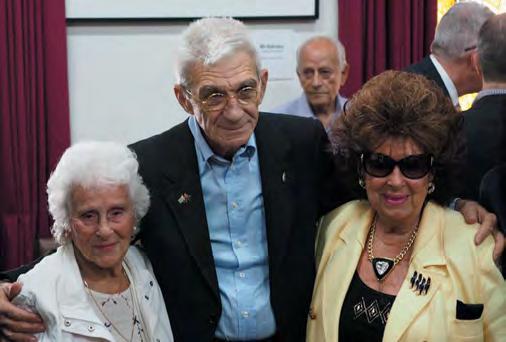
The Mayor of Thessaloniki wore a yellow Star of David in recognition of the liquidation of the Jews of Thessaloniki at the mayoral swearing-in ceremony when re-elected mayor in September 2014. Before the Holocaust, Thessaloniki was home to 80,000 Jews. In 1943, under Nazi occupation, some 60,000 Jews were deported to Treblinka and Auschwitz, approximately 90% of whom were murdered. A number of Thessaloniki Jews were involved in resistance acts both in the Warsaw Ghetto and in Auschwitz.
The function featured video testimony of Holocaust survivor, Maria Curtis (formerly known as Rachael Seror), who escaped the ghetto and was hidden by Greeks in Thessaloniki. This is an edited transcript of her testimony.
Iwas born in Salonika on 26 March 1923 to Israel Moshe and Emma Seror. I had an older brother, Israel Moshe, and three younger sisters, Joya, Matika and Rekita. My father had his own business making tins for jam and he also owned his own shop. We went to Greek school where we also learnt Hebrew. We had a good life, and I always used to sing at home.
We were then forced into a ghetto and had to leave most of our belongings behind. The ghetto covered quite a big area, but there were many people. We went to live with my uncle, as he had a big house. The ghetto was surrounded by barbed wire and was guarded by Germans with machine guns. There were also Jewish police. Everybody just wandered around until it was one’s time to be transported out of the ghetto.
I was in the ghetto for 16 or 18 days. A Greek friend came to see me and said she would find a way for me to escape. The Nazis were transporting people out of the ghetto. One morning I kissed my parents, grandmother, brother and sisters and they left on a transport. My father wanted me to come with the rest of the family, but my uncle said that I could go with him on the next transport. I went back to my uncle’s place and a couple of days later my friend returned to tell me that everything was organised.
On the day of my escape, I told my uncle that a friend was coming to give me a parcel. I could have been shot if I had been found in the street, but I managed to get to a house that the Nazis could not see. The people who saved me had lifted some of the barbed wire fence from the bottom. I was scared, but I knew that I only had two choices – to die or to escape. So, with a beating heart I escaped.
We lived in the centre of Salonika, near shops, cinemas and the Jewish hospital. We were proud to be Jewish and never had a problem until the Nazis arrived. In 1939 a friend of my father’s told him to pack up and leave as there was going to be a war. However, my father did not want to leave his business, so we stayed.
When the Germans marched into Salonika, my father took our family to a little village away from the city, but all was quiet until 1943, so we returned home. We were then forced to wear the yellow Star of David. The Greek government objected and the Greek people were also opposed to it, but they were powerless to do anything, so we all wore the yellow star.
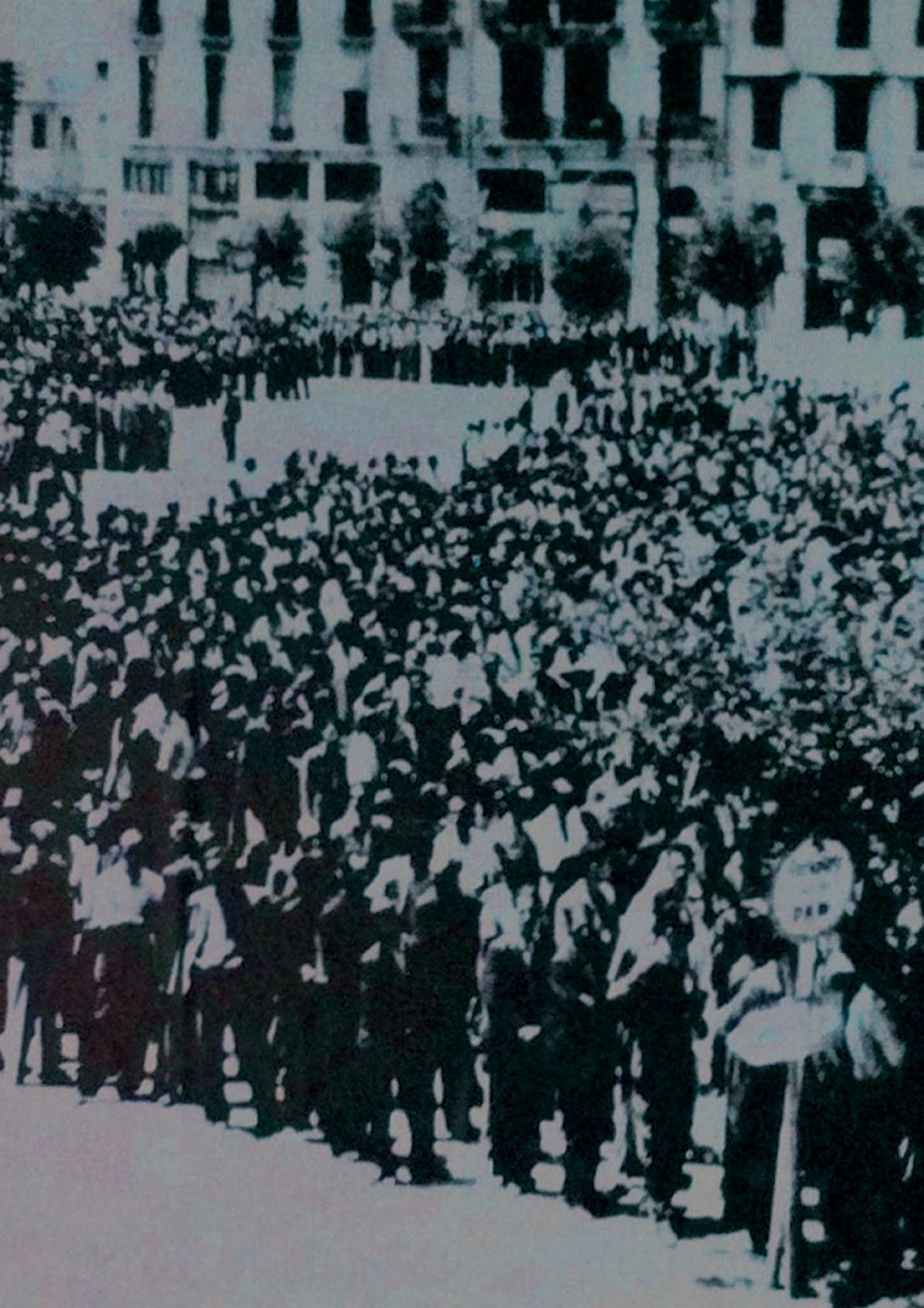
I was saved by Greek-Russian sisters whose father was an Orthodox priest. They helped many Jewish people and they were very good to me. I stayed at their house, and when people asked, they said I was their cousin. One day, however, someone must have said something, after which it was too dangerous to stay at their place. When it was dark, they took me to a house in a village – I don’t quite know where. From the verandah I could see many Jewish people marching and my heart went to pieces. We did not know about concentration camps at that stage.
My sister was sent to Auschwitz and had a number tattooed on her arm. She waited for me to arrive there on the next transport, but others who arrived told her that I had escaped from the ghetto. My father’s friend, Jacko, also told my father that I had escaped. At least they were happy with that news.
After the Nazis left Greece and the war had ended, I tried to find out who was alive. Suddenly a telegram arrived and I found out that one of my sisters had survived. Finding that out was such joy! The rest of my family, however, had been murdered.
JHC Centre News 12
(l-r) Maria Curtis, Yiannis Boutaris and Lola Putt
Jenny Mikakos MP, His Excellency Mr Charalampos Dafaranos, Ambassador of Greece and Mrs Evanthia Tourtsinaki
Memories of Ordinary People: Revisiting Kitia Altman’s memoir and the issues it raises
Freda Hodge
In her memoir, Memories of Ordinary People, Kitia Altman articulates her principles and concerns about important issues such as the ‘Righteous Gentiles’ and their important contribution to JudeoChristian relationships, her dismay at the corruption of normal moral values among the besieged Jews during the Second World War, the inversion of the roles of parents and their children, and the loss of the humanity of those terrorised by Nazi brutality.
The book gives the reader a fascinating insight, not only into the daily lives of other people, but into Kitia herself. Her observations and comments about the behaviour of others and her own reactions to her experiences demonstrate Kitia’s sharp mind and keen perceptions. Her quick intelligence enables her to understand the nuances of personality and the implications of people’s behaviour. She says of her book that ‘...it was not an end. It was a beginning’. It was the beginning of a long process of healing during which Kitia confronted her own demons about the evil of which human beings are capable. However, she also recognised the humanity and innate moral decency of those like the German Alfred Rossner, who was in charge of the garment factory in the ghetto where Kitia worked. He saved hundreds of Jewish lives, eventually paying for his good deeds with his own life. For Kitia, it is of the utmost importance that non-Jews like Rossner and Genia Potowiak, the Polish woman who hid Kitia’s niece, be recognised for their courage and deep sense of humanity. Kitia’s efforts enabled both to be honoured by Yad Vashem
as Righteous Among the Nations.
In a note about the author at the beginning of the book, Sophie Inwald writes that Kitia’s memories ‘are a window through which we can glimpse a lifestyle, traditions and family relations that have disappeared forever. The accounts are also a testimony to the brutality of war and
how it affects people...’ Kitia’s stories reflect both the prewar life of her middle-class family, and the depravity and brutality of the Nazi regime. She recounts the narratives with a keen sense of perception and also humour as she describes the foibles and follies of the townspeople. Her story began in the small Polish town of Bedzin in Upper Silesia where Kitia experienced a comfortable and secure childhood. She was greatly loved by her parents, who were generous not only to their own family, but also to others in need. She led a sheltered existence, but despite this, she found the strength and resourcefulness which helped her survive. Although Kitia was an obedient child, she showed early on that she had a strong will and clear ideas about right and wrong. She had a strong sense of her own identity, illustrated by her decision to destroy a dress which she hated, but which her mother insisted she wear. Her generosity of spirit was evident in her decision, when she could have gone into hiding with a Polish family, to insist that her niece Maroussia go in her stead into the care of the Polish woman, Genia Pajak. Kitia refused to compromise her moral values when she rejected to spy on Israel Diamant, a co-worker in the uniform factory, at the behest of a senior Jewish official who asked Kitia to become an informer. Despite threats to her safety, she refused to do so.
After Kitia’s family was forcibly removed to the ghetto, she was greatly disturbed by her growing awareness that the Nazis were destroying not only the physical lives of their victims, but also compromising their moral values. They were brutalised by the Germans, but some Jews became brutal themselves in their attempts to survive. The Judenrat created a hierarchy among the Jewish population, which led to corruption, envy and greed. Many young people developed a distorted value system with regard to life and death. Some deemed older people to be dispensable and the young deserving of life at all cost. The moral dilemma for all was how to maintain their humanity. In these horrific circumstances, Kitia refused to compromise her own morality.
In her chaotic world Kitia found herself in the role of the provider and supporter of her parents. This role reversal affected both her and her parents very deeply. Her father was especially disturbed by his loss of authority, while her mother became more and more dependent on Kitia, so much so that she declared that if Kitia were to accept the offers of help to escape, she would be signing the parents’ death warrant. However, Kitia’s survival skills were quickly honed as she learned how to maintain life in the ghetto, in Auschwitz and under slave labour, despite being treated as a subhuman by the German overlords.
In ‘The Survivor’s Credo’, the last chapter in her book, Kitia declares that her raison dêtre, her purpose in life after surviving the horrors of the Holocaust, is to honour the memory of the slaughtered Jews by recounting the story of the Holocaust, and striving ‘for a more humane society’.
Memories of Ordinary People by Kitia Altman (Makor Jewish Community Library 2003) is available from the Jewish Holocaust Centre library.
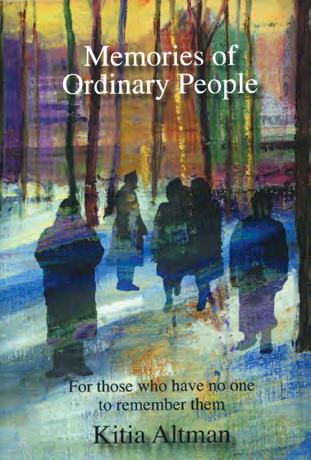
JHC Centre News 13
Genocide in Rwanda: historical overview and personal reflections
 Sue Hampel OAM
Sue Hampel OAM
On 6 April 1994, a series of actions began that quickly turned into one of the 20 th century’s greatest mass violations of human rights. Facing a political vacuum caused by the assassination of Rwanda’s Hutu president, Juvenal Habyarimana, influential hardliners within Rwanda’s ruling party and the military orchestrated a takeover and declared war against the minority Tutsi population. For the next 100 days, bands of Hutu men and even some women swept across the country, killing and raping Tutsis. The violence was frighteningly swift, comprehensive and participatory. It was a horror that we should never forget.
In 1994, Rwanda’s population of approximately seven million was divided into three ethnic groups: Twa (1%), Hutu (85%) and Tutsi (14%). Before colonisation, Rwandans shared the same religion, ancestral stories, language (Kinyarwandan), customs and clan names. The Twa were pygmoids who lived as hunter-gatherers, the Hutu were peasants who cultivated the soil, while the Tutsi were pastoralists and cattle-herders. Intermarriage was common. The Mwami (King) was the centre of a large court, whose authority was unquestioned.
Although Rwanda was not always peaceful before the arrival of the Europeans, there is no record of systematic violence between Hutu and Tutsi.
In 1890 Britain and Germany divided up East Africa and the Germans took over Rwanda, but after the First World War, the League of Nations handed control to Belgium. The Europeans perceived Hutus and Tutsis as racially, culturally and historically distinct and strengthened the rule of Tutsis. The Belgians rigidly codified Hutu and Tutsi designations and, in the divide-and-rule tradition, made Tutsis the colonial favourites.
The Belgians believed that Tutsis were a good and noble race descended from the Egyptian Nilotic civilisation, while the Hutu were regarded as the offspring of Ham, cursed by God and destined to be slaves. As was typical of imperial racial theorising, the mark of civilisation was grafted onto physiognomic difference, with generally the taller, supposedly more refined Tutsis destined to rule, and the shorter, allegedly less refined Hutus to serve. In other words, the European colonisers racialised the differences between the Hutu and Tutsi.
The Belgian reforms of 1926-1931 created a ‘modern’ centralised, efficient, neo-traditionalist and Catholic Rwanda. After the Second World War, Belgian policies shifted radically to favour the less educated Hutu majority, unleashing pent-up Hutu frustrations and leading to the first proto-genocidal massacres of the Tutsis. Many Tutsis fled to neighbouring Zaire, Tanzania and Uganda.
By 1951, there were as many black Rwandan – almost exclusively Tutsi – priests as white clergy. At the same time, the Tutsi increasingly challenged the colonial order. Consequently, the church gradually shifted from
supporting the Tutsi elite to helping the Hutus rise from subservience towards a new aspiring middle class.
When King Mutara III Rudahigwa died in July 1950 without any heirs, he was replaced by his younger brother, King Kigeli V, who proved incapable of providing real leadership. At this time, more than 150,000 Tutsis fled to Tanzania, Burundi, Zaire and Uganda. The makings of a violent society were emerging as the seeds of genocide were being sown.
From 1960, the Belgian colonial government began to replace most of the Tutsi chiefs with Hutus, while also launching the idea of self-government for Rwanda. The first municipal elections were held and the Party for the Emancipation of the Hutus (Parmehutu) led by Gregoire Kayibanda won the majority of votes. Rwanda became independent on 1 July 1962 and Kayibanda became the first president.
In 1973, a coup brought Hutu authoritarian Juvenal Habyarimana to power, beginning a 20-year dictatorship. Although Habyarimana brought peace and stability to Rwanda and conditions for the Tutsi improved slightly, trouble brewed beneath the surface. While Habyarimana projected a liberal image to attract foreign aid, his regime was dominated by a select group of Hutus and ethnic hatred against the Tutsis increased. Soon they were purged from universities and quotas were imposed on their employment in government and educational institutions.
In 1987 Rwandan exiles in Uganda formed the Rwandan Patriotic Front (RPF). Three years later, the RPF launched a military invasion of Rwanda. This military conflict exacerbated the economic crisis in Rwanda and led to a growing climate of fear among Hutus that the Tutsi rebels would massacre them. Between 1990 and 1993, a series of mini pogroms against the Tutsi took place and exterminationist propaganda became commonplace. In December 1990, the Hutu extremist paper, Kangura, issued the infamous Hutu Ten Commandments. In August 1993, the radio station RTML (Radio Television Libres des Milles Collines) began broadcasting.
JHC Centre News 14
Sue Hampel with children in a Rwandan village
Propaganda and militia killings reached a peak precisely when the Habyarimana regime was being pressured by the international community to implement multi-party democracy and seek peace with the RPF. The Arusha Peace Accords guaranteed free elections. The UN Assistance Mission for Rwanda (UNAMIR), under the command of Lieutenant-General Romeo Dellaire and comprising some 2,500 foreign peacekeepers, arrived to monitor the ceasefire.
Hutu extremists responded to the Arusha Accords by importing hundreds of thousands of machetes, the weapon that would become the symbol of the Rwanda genocide.
At 8.30pm on 6 April 1994, the plane carrying President Habyarimana was shot down as it neared Kigali airport. Just over an hour later, roadblocks were erected. The following day, working from carefully prepared lists, soldiers and Interahamwe (militia) began murdering thousands of Tutsis and oppositionist Hutus. Ten Belgian peacekeepers protecting the moderate Prime Minister Agathe Uwilingiyimana were tortured and then murdered, along with Uwilingiyimana, prompting Belgium to withdraw its remaining forces from Rwanda. Despite heated protests from UNAMIR commander LieutenantGeneral Dellaire, other countries followed and Rwanda descended into chaos.
By 4 July, the RPF soldiers regained control over Kigali and the genocide was over.
Seeking the trail of remembrance has taken me on many journeys, but Rwanda will stay in my heart forever. As we know, Jews were victims of the Holocaust, but the lessons from our tragedy apply to all of humanity. I have been to Rwanda twice and have seen that the words ‘never again’ were meaningless there as, 20 years ago, over 800,000 Tutsi were killed in a genocide that raged for 100 days. And unlike most Jewish survivors who left war-torn Europe to start a new life elsewhere, Rwandans still live alongside the perpetrators of their massacre.
In Rwanda I spoke to many genocide survivors. They wanted us to know what happened while the world sat by and watched the massacre unfold. Their stories have left an indelible imprint on my heart and in my mind.
Nyamata is a village approximately 35 kilometres from the capital, Kigali. When the genocide began, many residents of the region gathered to seek the protection of the Catholic Church, which was regarded as a place of refuge the militia would not dare to attack. However, on 10 April 1994, the killers entered the church with their rifles, grenades and machetes and violated the ancient precept of holy sanctuary. Approximately 10,000 civilians were
massacred that day. Charles was one of only three known survivors. He was eight years old and hiding in the church with his parents and siblings when the killing began. Here Charles explains how his older brother saved his life: We had locked the door to prevent the Interahamwe from entering the church. The Interahamwe used sledgehammers to break open holes in the walls and they threw grenades into the church through these open holes. They took pregnant women to the church altar and sliced open their bellies. The horrors didn’t stop. They smashed children’s heads against the walls. People were begging to pay for bullets instead of being hacked to death by machete. My brother had been mortally wounded and he saw that I was uninjured. He told me to pretend I was dead and he lay on top of me and covered me with his blood. I fell into a deep sleep and when I woke up many hours later in a pool of blood, I was the only person alive in the church. I climbed over the bodies and realised I needed to find a hiding place. I went to the swamp where I hid for many many days until I was finally rescued. This is my story. I come to this church every day to remember my story and to tell people who visit this church.
I was deeply affected by Charles’s story, which still haunts me today. I cannot forget the dusty smell of the Nyamata church with its skulls and the bloody rags of those who were murdered, and blood smears where infants were smashed against the walls. I promised Charles that I would remember his story and honour both the victims and survivors of this terrible atrocity.
In rural Rwanda, I also visited a remarkable place that takes in young orphans of the genocide. It is called the Agahozo Shalom Youth Village. It is a place of hope, where ‘tears are dried’ (agahozo in Kinyarwandan) and where the aim is to live in peace (shalom in Hebrew). It was founded by the late Anne Heyman, a South African-born lawyer and philanthropist who lived in New York. After Anne learned in 2005 that the Rwandan genocide had orphaned 1.2 million children, she saw a glimpse of salvation in the experience of Israel. When there was a large influx of orphans from the Holocaust, Israel built residential youth villages. Anne used the Yemin Orde Youth Village as a model for the Rwandan project. She raised money to acquire land and build a village of 32 houses for 500 teenagers. The ultimate goal of the Agahozo Shalom project is to equip young people who have lived through trauma to become healthy, self-sufficient and engaged in the rebuilding of their nation. ***
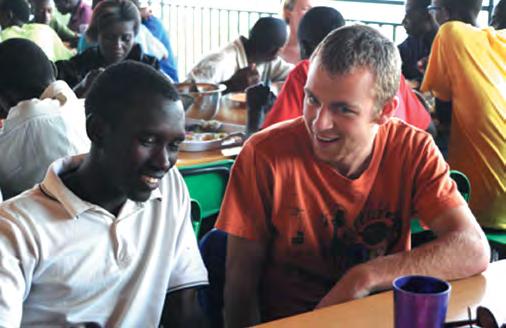
April 2014 was the 20 th anniversary of the Rwandan genocide. Since then, this tiny East African nation has rebounded – the Kagame government has advanced women’s rights, the economy is surging, poverty has declined and life expectancy has increased. It is my fervent hope that the words ‘never again’ will become an enduring reality, not only in Rwanda, but for our common humanity.

***
Sue Hampel OAM teaches Holocaust, Genocide and Postconflict Studies at Monash University’s Australian Centre for Jewish Civilisation and is Vice President of the Jewish Holocaust Centre.
JHC Centre News 15
Charles
Aaron Densham with a youth from Agahozo Shalom
Facing the past
Late last year, the Jewish Holocaust Centre’s 30th anniversary year, the Centre presented a photographic exhibition titled Facing the Past. Photographed in black and white by Simon Shiff, the exhibition captured images of the 36 survivor volunteers currently working at the Centre. The artist wanted his photographs to capture the survivors’ powerful stories and personal strengths, honouring their quiet dignity and resilience in the face of tragic memories.
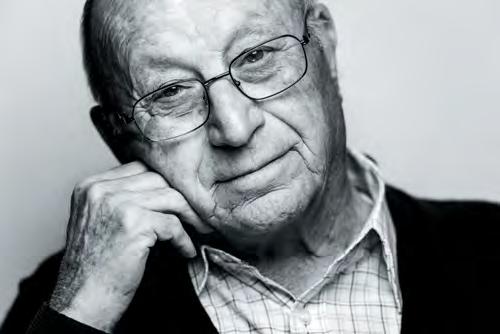

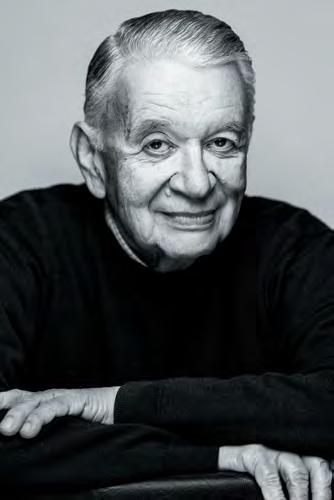

These are some of the portraits from the exhibition.
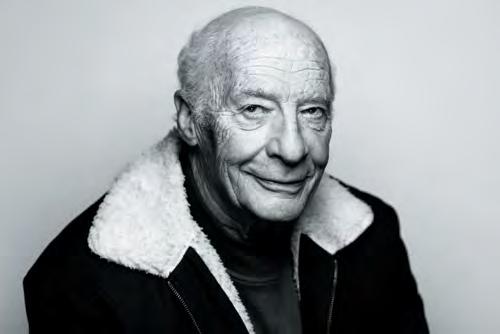
JHC Centre News 16
Lusia Haberfeld
Paul Grinwald
Freda Schweitzer
Joe de Haan
Jack Fogel

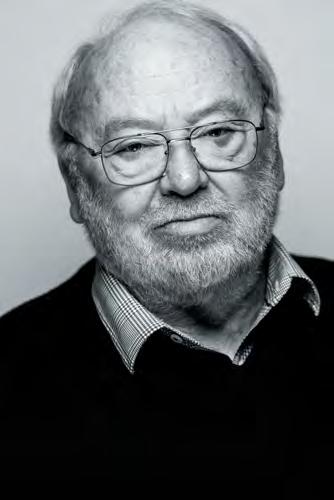
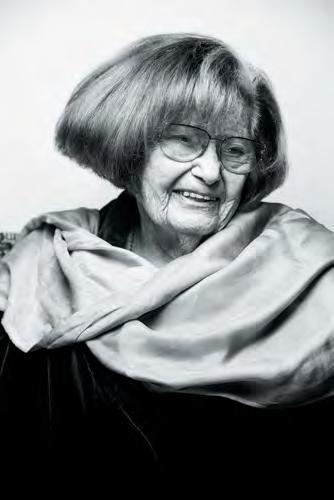



JHC Centre News 17
Floris Kalman
John Lamovie
Kitia Altman
John Chaskiel
Rona Zinger
Maria Scheinfeld
The consequences of the Nazi policy of confiscating Jewish-owned artworks: a Melbourne connection
Olaf Ossman

At my first meeting with a woman called Mrs Kaufmann in Johannesburg in 1991, she showed me two photos. One was a passport photo of Richard Semmel taken before he left Europe; the other showed him with Grete Gross, Mrs Kaufmann’s mother. The second photo was taken in Central Park, New York in 1945. Both Mrs Kaufmann and Richard Semmel had escaped Nazi Germany, had known each other, but had never seen each other again. Later, Mrs Kaufmann showed me a photo of Semmel’s former villa in Berlin, which we know from its sale in recent years, was of huge dimensions. Mrs Kaufmann told me that Mr Semmel had built this villa exclusively to house his ‘babies’ – his art collection. Photos we found later of the interior of the villa gave us an impression of what this collection had been. Mrs Kaufmann also gave me some general information about Mr Semmel.
Richard Semmel was born on 15 September 1875 in Zobten, Silesia, and lived in Berlin, where he owned the Arthur Samulon & Co factory. According to pre-1933 tax documents, we know that his yearly income was above 100,000 Reichsmark. As well as manufacturing textiles, he was a passionate art collector who amassed a valuable collection. Until April 1933, he lived with his wife in his mansion in Berlin-Dahlem. They had no children. Semmel was Jewish, a member of the German Democratic Party and, in his own words, a ‘strong supporter of democracy’.
When the Nazis came to power, Semmel sustained huge financial losses and fled to the Netherlands, where his brother lived, to avoid imprisonment. Step by step, he was forced to sell all his property, including his valuable art collection. In 1934, his Berlin villa was sold under market value. His real estate and the factory came under forced ‘Aryan’ administration and were
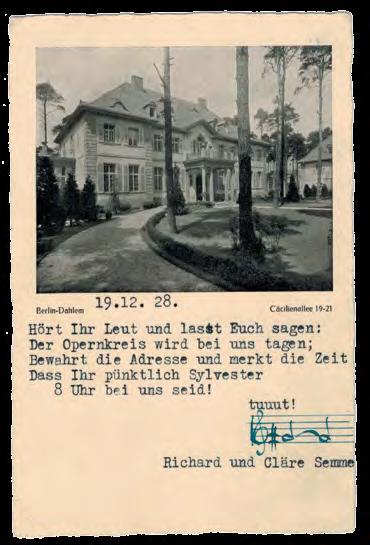
sold in 1937 without any ‘cash-inflow’ to Semmel.
When everything was sold, the tax authorities ceased the procedures they had been taking against him despite having no proof of any wrongdoing on his part. On 25 November 1937, the authorities sent Semmel an Unbedenklichkeitsbescheinigung (clearance certificate), did not pay anything back to him and closed the file. In 1938 Semmel also had to pay 179,800 Reichsmark Judenvermögensabgabe (Jewish property levy) and an additional 204,975 Reichsmark Reichsfluchtsteuer (tax on flight from the Reich), which he was no longer able to pay.
In 1940, Richard Semmel and his wife left the Netherlands to immigrate first to Chile, the only possible place for which they could obtain a visa. The Semmels went to the United States in 1941, where they lived in destitution. Mrs Semmel died in 1945; Richard died in 1950. Mrs Gross had cared for Richard after his wife’s death. She and Richard’s friends paid for his hospital bills and funeral. He left his estate to Grete Gross. Her daughter, Mrs Kaufman, then inherited the estate.
In 1991, under instructions from Mrs Kaufmann, I submitted a claim for Mr Semmel’s factory. This kept me busy until 21 November 2001 when a German court granted compensation.
Aside from the photos, Mrs Kaufmann was not able to provide me with any documentation in regard to Semmel’s other assets, so I began with a search of the press to find out if Semmel had been mentioned in newspapers of his time. I only found one article in which the Chamber of Commerce congratulated him on his 50 th birthday. I subsequently found some material about his factory, including old registration files. His factory had more than 1,000 employees.
Our next step was to search German
JHC Centre News 18
Invitation from Richard and Clare Semmel with a photo of their villa
Richard Semmel
archives systematically. As a result, we found 92 references to Semmel. These references included tax files and compensation files from after the Second World War, files about the withdrawal of all financial accusations in 1938, some material about Semmel’s immigration to the United States and some correspondence with his lawyer in Amsterdam. However, we found no reference to his former art collection or details of its whereabouts in any of the documents.

The first reference to the ‘Semmel Collection’ appeared in the 1930 edition of the art magazine Pantheon, where the collection was described for the first time. This reference then lead us to a publication that described an exhibition at the Kaiser Friedrich Museum Berlin in 1925.
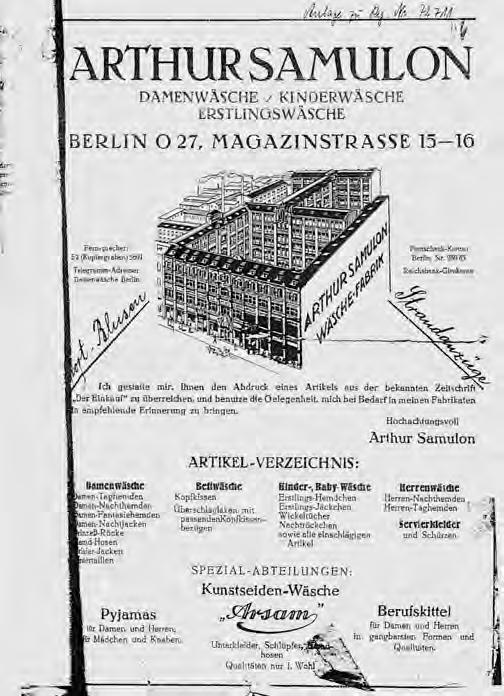
From the time we saw this document, our research team and the NGV began to connect the information from all available sources, including auction catalogues and documentation of exhibitions. Finally we were able to complete and correct the provenance.
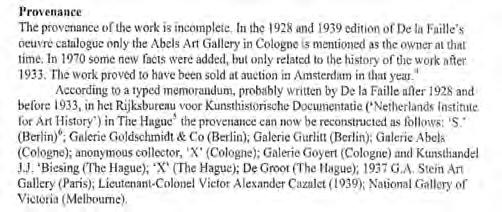
We found that after the auction in June 1933, the painting was lodged with the Gallery Guy Stein in Paris and was subsequently purchased by Eccles, London, in 1935. From 1939 it was in the collection of Lieutenant Colonel Victor Alexander Cazalet (1896–1943), MP for Cranbrook, Kent and London. It was exhibited at the Exhibition of French and British Contemporary Art in Melbourne in 1939, on loan from Cazalet. The painting remained in Australia and was purchased using funds from the NGV’s Felton Bequest in 1940. It is now at the National Gallery of Victoria (958-4) in Melbourne.
While we were investigating the painting’s provenance for the NGV, the press had made the connection between the painting and the claims of Semmel’s heirs in the Netherlands, revealing the identity of ‘Mr S from Berlin’. In December 2013 we were able to provide the NGV with an expert report with the following contents:
It became clear that Semmel’s collection consisted of two parts: Old Dutch and Italian masters, and modern art. After further research we eventually came across two auction catalogues from Frederick Muller & Cie in 1933, one from June and the other from November. Here we found almost half of the original 120 paintings that belonged to the collection. With this information a team of specialists began to investigate the destiny of each of the paintings in these catalogues and also, where possible, the destiny of the paintings not sold at these auctions. This investigation is still in progress.
One of the paintings in the June 1933 catalogue, lot 17, was ‘Portrait of a Man’, attributed to Vincent van Gogh . The 1930 Pantheon mentioned that the painting was from the time van Gogh spent in Paris. No other information about this painting appeared until a summary report of the Van Gogh Museum Amsterdam was published by the National Gallery of Victoria (NGV). It came to our knowledge in 2013. Here is what it stated:
From here it took the NGV only five months to come to a decision to acknowledge Richard Semmel as the rightful owner of the painting. The painting, which had been withdrawn from public view during the negotiations, is now back on display at the NGV for another year under a loan agreement.
With the acknowledgement of Richard Semmel as the owner of ‘Portrait of a Man’, we were able to add another piece to our puzzle of what had become of the Richard Semmel art collection.
Olaf Ossmann is a Swiss-based lawyer specialising in international law and restitution of art works. He spoke at the Jewish Holocaust Centre in October 2014.
JHC Centre News 19
Richard Semmel’s factory
Remembering Kristallnacht: a personal perspective
Ellen Suss
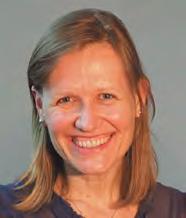
In November 2014 the Jewish Holocaust Centre held the Betty and Shmuel Rosenkranz Oration. The Oration is held annually to honour Shmuel and his late wife, Betty, for their outstanding contribution to the Jewish Holocaust Centre and to the wider Jewish community generally. Speakers at this year’s oration, commemorating the 76 th anniversary of Kristallnacht, were His Excellency Shmuel Ben Shmuel, Ambassador of Israel to Australia and Ellen Suss, a volunteer guide at the Jewish Holocaust Centre. This is an edited version of Ellen’s address.
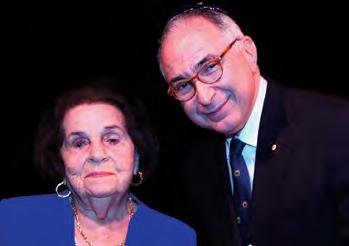
Ihave a German non-Jewish background and I work as a guide at the Jewish Holocaust Centre museum. It is my privilege to work with the survivors and to try to convey a message to young Australians – not to let atrocities like the Holocaust happen again.
When I was 13, my father, who belongs to the immediate post-war generation in Germany, took me to see the concentration camp at Dachau. There and in the following years I wished to meet Jewish people to tell them how sorry I felt for what my nation had done to them.
During my secondary school education in the 1980s we learnt much about the Shoah in the different subjects we studied. The underlying tone from our teachers was always, ‘look what we have done – never again!’
Thank you for giving me the opportunity to emphasise that my generation of Germans is very sorry for the atrocities committed against Holocaust survivors, their families and the Jewish people.
Many German people today do remember the Kristallnacht pogrom on the night of 9-10 November 1938. In several German cities where the Nazis and local citizens destroyed the synagogues, vandalised Jewish shops and even killed Jewish people there are commemorations and marches every year on 9 November. In 2008, for the 70 th anniversary of Kristallnacht, I participated in a commemoration weekend in Munich with nearly 1,000 Germans, including community and church officials and a delegation from Israel.
In 2002 in Freiburg, where I lived before moving to Israel, some neo-Nazis demanded the right to hold a march. Because Germany is a democratic state, the mayor had to allow the march to go ahead. However, on the appointed day, thousands of citizens went to the railway station to meet the neo-Nazis when they arrived and prevented them from entering the city. One elderly German man said to me: ‘I was too young to understand and help when I saw the synagogue burning in 1938, but now I’m standing so that it will not happen again.’
As a school teacher in Freiburg I took students to Israel where we had the privilege of participating in a Yom HaShoah commemoration with our partner school in Jerusalem. We showed the Israeli students pictures of memorial sites in Freiburg commemorating the deportation and murder of the Jews of Freiburg, to let them know that the Shoah has not been forgotten.
I have personally visited Westerbork in Holland, Sachsenhausen, Buchenwald, Dachau, Babi Yar and Auschwitz. There, at Auschwitz, when stopping at the death wall, I realised that for some time I had had a melody in mind, and that the song was Am Yisrael Chai (The people of Israel lives).
I, together with many of my generation, would like to ask you for forgiveness for what our people did to you 70 years ago. And I would like to declare Am Yisrael Chai!
Recognising the contribution of Rosa Krakowski
Members of Melbourne’s Jewish community who give of their time unstintingly to the community were recently recognised in the annual JCCV Community Recognition Awards.
The Jewish Holocaust Centre congratulates Rosa Krakowski who was recognised for her work as a survivor guide at the Centre.
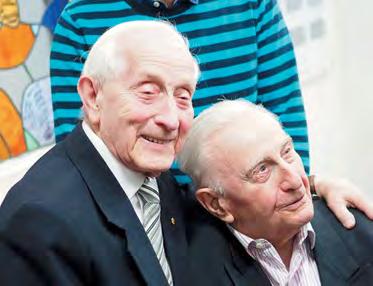
JHC Centre News 20
(l-r) Abram Goldberg OAM and Shmuel Rosenkranz
Ellen Suss
Rosa Krakowski and Professor Jeffrey Rosenfeld AM OBE
As far away as possible: Melbourne Holocaust survivors tell their stories
Hannah Miska
Back in 2006, strolling in Elsternwick, I stumbled across the Jewish Holocaust Centre (JHC). Until then, although I was living in Melbourne, I had not heard of the organisation that would lead to the publication of my book eight years later.
On my first visit to the JHC museum I met survivor guide Stephanie Heller. Stephanie was the first Holocaust survivor I had met and our conversation left such a deep impression that a few months later I found myself working as a volunteer alongside curator Jayne Josem. I continued to work at the Centre until I left Melbourne to return to Germany in March 2010. During this time, I had the opportunity to speak to many of the survivors, and fairly quickly formed the idea of collecting their biographies into a book. I interviewed about 30 survivors and wrote down their horrendous tales of persecution.
It was not easy to find a publisher, either in Australia or in Germany. Eventually, however, my efforts paid off and Mitteldeutscher Verlag, a well-known and reputable German publishing house, showed interest and published the book in August 2014. Its title is So weit wie möglich weg von hier. Von Europa nach Melbourne – Holocaust-Überlebende erzählen. (As far away as possible. From Europe to Melbourne – Holocaust survivors tell their stories.)

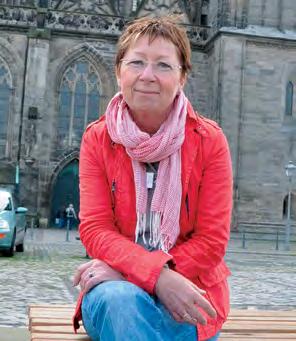
Owing to the enormous volume of material, only 17 biographies found their way into the book, grouped in 12 chapters, each beginning with a brief summary of a particular aspect of the Holocaust in Germany, Czechoslovakia, Poland, Belgium, Lithuania and Hungary. The survivors talk about ghettos, labour, concentration and death camps, about their survival in hiding or under a false identity, about medical experiments in Auschwitz and about death marches, but also about Jewish resistance and rescuers of Jews. Each of these topics became the feature of the historical summaries.
The foreword was written by Hans-Dietrich Genscher, the former long-standing German Minister of Foreign Affairs who was very influential in building an active policy of détente, and who played a major role in uniting Europe and re-uniting East and West Germany. Aged 87, he is still politically active, and honoured and respected by the vast majority of Germans. As an 18-year-old in early 1945, he was drafted into the German army to defend Berlin, and was lucky enough to survive the war, because, so he writes, the army general decided to disobey Hitler’s orders and to lead his 80,000 soldiers out of Berlin. Germany was destroyed, but the war was over and a new era lay ahead, the young Genscher thought. And in him grew the will to help to build a new Germany that was to become a stable
influence on détente and peace in Europe.
Genscher stresses the importance of this book. ‘The voices of witnesses will be silent soon, and only historians will be able to talk about the worst crime in human history: the genocide of the Jews. Therefore, it is so important to listen to the living today.’ He continues: ‘Seventy years after the end of the Second World War, there is a temptation to put the horrific past aside, but we must not give in. The past should be kept alive as a constant reminder that democracy is a precious asset that has to be actively formed by all citizens in order to maintain it. This is the message especially for the young generation. The survivors’ memories show how important tolerance, dialogue and the courage to stand up for one’s beliefs are in an increasingly diversified society. Without knowing the past we do not understand the problems of the present, and we will not be able to take responsibility for the future.’
The book launch will be held in May 2015 at Berlin’s Memorial to the Murdered Jews of Europe, with speeches to be delivered by Hans-Dietrich Genscher and Uwe Neumärker, Director of the Memorial. In the meantime, I have been invited to do several readings, in churches, museums, libraries, book shops and at United Nations Holocaust Memorial Day in Halle, northern Germany. In Halle the State Home Secretary of Sachsen-Anhalt gave an introductory speech and the event was attended by 140 people. My publisher has also invited me to read at the Leipzig book fair, one of the two major book fairs in Germany. Interest has been very positive, even in the very conservative area of Bavaria in which I live, where a considerable number of people would prefer to forget rather than remember.
Again, I would like to thank all those survivors I met at the JHC who were willing to talk to me about their lives. I never took their time, effort and commitment for granted and I was always aware that the interviews would touch on traumatic experiences in their past. My thanks also to the JHC for their unwavering support and for access to the library and precious documents in the Centre’s collection.
The book is only available in German from Amazon Germany at www.amazon.de.
JHC Centre News 21
Hannah Miska
Roman Talikowski: Righteous Among the Nations
In November 2014, the Israeli embassy hosted a ceremony in Canberra to honour the late Roman Talikowski, a Polish Catholic cloth merchant who risked his life to save Jews from the Warsaw Ghetto. Mr Talikowski has been recognised by Yad Vashem and the State of Israel as a Righteous Among the Nations, the highest award bestowed upon non-Jews for bravery in helping Jews during the Holocaust. Mr Talikowski’s son, Jack, accepted the award on behalf of his father.
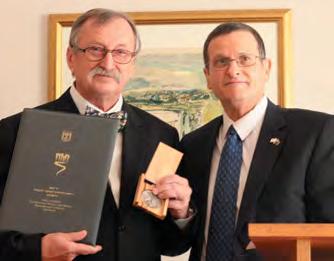
Roman Talikowski regularly risked his life to smuggle food and money into the Warsaw Ghetto, as well as helping Jews in the ghetto to escape with false papers to safe houses.
In her video message, Holocaust survivor Joasia Przygoda, who was a baby in the ghetto, told of being drugged, concealed in a bag and smuggled out of the ghetto by her father. Mr Talikowski helped by bribing guards at Nazi checkpoints and then organising a hiding place for Joasia outside the ghetto.
The Israeli Ambassador, His Excellency Mr Shmuel BenShmuel said Talikowski showed the best of humanity when the worst qualities of mankind had consumed his society. ‘He found courage when others were paralysed by fear and made a stand against violence and
atrocities. When he and so many others were surrounded by hatred and evil, Roman showed love and compassion. He had the conviction to act upon what he knew was right,’ he said.
Jewish Holocaust Centre President Pauline Rockman, who attended the ceremony, stressed the importance of acknowledging the actions of those who rescued others despite the risk to themselves. Speaking of the Righteous Among the Nations she said, ‘The recipients of such honours are ordinary people – unpretentious, regular folk. But what is remarkable about them – what distinguishes them from countless others – is their inordinate compassion, their generosity of spirit and their ability to acknowledge the dignity of all human beings irrespective of race, creed or colour. They risked their lives and the lives of family members to save Jews from the scourge of the Nazis. Holocaust survivor, author and Nobel Peace Laureate, Eli Wiesel, refers to the Righteous as “upstanders”, distinguishing them from the “bystanders” who stood silently while the victims of the Nazis and their henchmen embarked on a genocide unprecedented in the annals of history. For them the axiom of our ancient rabbis – that “whoever saves a life, it is considered as if he saved an entire world” – it is not simply an aphorism. It is an absolute truth.’
JHC Centre News 22
(l-r) Jack Talikowski and His Excellency Shmuel Ben-Shmuel, Israeli Ambassador to Australia.
Photo: Embassy of Israel in Australia
Gazing at the Stars
By Eva Slonim
Reviewed by Elaine Davidoff
When guiding school students through the museum at the Jewish Holocaust Centre, I ask the students to look at the pictures of children who were held under Nazi rule and to choose one they would like to know more about. Invariably, they choose the picture of children standing at a barbed wire fence, looking out.
I explain that the children have just been liberated at Auschwitz and ask what they imagine the children might be feeling. They respond, ‘They’ve lost everything’; ‘they look hopeless.’ All these descriptors are possibly correct, but on reading Eva (nee Weiss) Slonim’s book, Gazing at the Stars, it was revealing to finally hear the words of one of those children in that picture: ‘Liberated by Russian soldiers in late January 1945,’ Eva writes, ‘we stood there in the snow, suddenly free… what was left was an insatiable emptiness. A hunger, in body and soul.’
In Gazing at the Stars, Eva recounts her harrowing journey from a comfortable, loving, Jewish life on Palisady Ulica in Bratislava to Auschwitz, and then back to Bratislava.
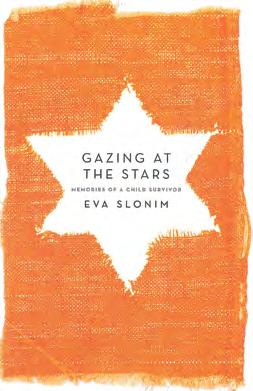
In March 1939, the Hlinka Guard, the Slovak counterparts of the SS, entered the Weiss family’s life. ‘During that first week, I saw Pres Opapa beaten, Papa arrested and Mutti a changed woman. It was during this week that I ceased to be a child; I lost my innocence forever… nothing would be simple or calm or easy ever again.’
In 1941, Eva was sent by her parents to look after her elderly widowed grandmother and paternal grandparents. Her father, meanwhile, had organised hiding places for all his children in case of deportation. Despite terrifying incidents where it was necessary to hide, the family managed to escape deportation for a few years. Writing of many family members and friends, ‘we never heard from them again’ is a constant refrain in the early chapters.
In 1943 Eva had to have her tonsils removed. In hospital, she was confronted by the cruelty of nurses who handed the Jewish doctor a blunt needle saying, ‘So what? She is Jewish’, and then forcing her to ‘wash off that blood and get out’. This cruelty foreshadows what lies ahead.
In March 1944, Papa and Mutti Weiss sent all their children away from Bratislava, with the exception of Eva. ‘You are the oldest daughter and you do not look Jewish. You must help us here in Bratislava,’ they
explained. However, when Germany invaded Hungary, the children returned, except for six-year-old Judith who was deported and died in Auschwitz.
In the late spring of 1944, Papa Weiss again sent his children into hiding, this time in pairs. Eva and her younger sister Marta, using false papers, went to live in an apartment in Nitra. She was twelve years old; her sister was ten. Farewelling his children, their grief-stricken Papa said, ‘Remember, the same stars will shine over you as over Mutti and me…. just look at the stars, speak to them… I also will look at the stars, and I’ll try my best to answer.’
In Nitra, Eva endured constant harassment and brutality at the hands of Gombarik, the head of the Hlinka Guard, who was obsessed with proving that the girls were Jewish. He relentlessly pursued them, until he finally put Eva and Marta on the train to Sered and ultimately to Auschwitz.
From 3 November 1944 until the war ended, Eva and Marta endured the horror of Auschwitz-Birkenau, initially in the Toddlers Barracks and then in Mengele’s Twins’ Barracks. Mengele ‘mistakenly took us for twins. To be a twin at Auschwitz meant to stay alive, but at a cost… we suffered there, alone, without our parents, in the middle of a waking hell.’ Yet, she continues, ‘we were desperate to live. I used to look up at the stars every night, searching for guidance from my parents. It gave me hope.’
In late January 1945, the notorious death marches began. Eva was too ill to march and remained in the prison hospital until Russian soldiers liberated the camp. Eva and Marta then began their long, frightening journey back to Bratislava. Eva’s account of the journey home is astonishing – two young girls alone in an often-hostile world. Finally, upon reaching home, despite the joy of reunion, further tragedy awaited them.
We live in times where we are encouraged to express our emotions, so it seems almost unimaginable that when Eva and her family were reunited, ‘No-one spoke of the nightmare we had all survived. Although united, we were still alone…. It was (all) unspeakable at this stage. Unutterable. But the silence resolved nothing; it only made things worse. Something had been broken that would never be repaired.’
Ultimately though, Eva did speak. Sharing the memories that accompany her daily, she feels it is incumbent on her and her fellow survivors to recount the tragedy that unfolded in Europe.
Eva’s voice in Gazing at the Stars is unique, rendered with a particular clarity. Using sparse, pared back prose, she tells of unimaginable horror. One has to constantly remind oneself that these are the experiences of a mere child. Eva’s account is one that demands our attention.
23 JHC Centre News
BOOK REVIEW
Exploitation of the Holocaust
Chris Dargan
The subject of the Holocaust carries a fair amount of emotional weight. Mention only has to be made of comparison to the Holocaust to arouse intense emotions in the listeners. For that very reason such mention can be used to manipulate the listeners against whatever is being compared to the Holocaust. It comes as no surprise therefore that various groups have tried to foster this visceral emotional reaction to gain the support of their audience.
Right to Life groups and Youtube evangelists such as Ray Comfort have often compared the Holocaust to abortion in order to manipulate their audiences emotionally.
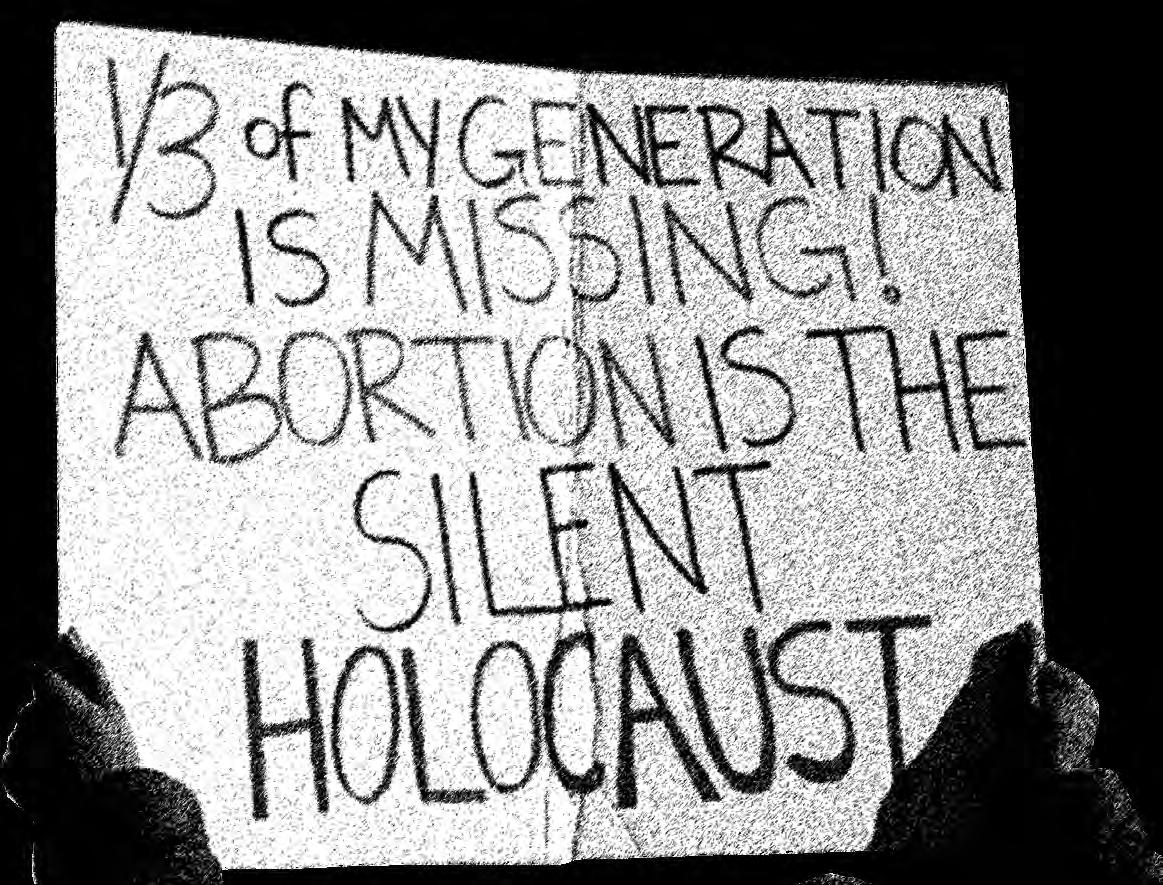
For example, ‘Survivors of the Abortion Holocaust’, a Right to Life group, has been quoted as declaring that it is ‘engaged in a battle to end America’s genocide’, while Ray Comfort has gone so far as to create an entire documentary – 180 – whose only argument is that of moral equivalency by comparing abortion to the Holocaust.
Such a moral equivalence-based argument is invalid at best and manipulative at worst. The B’nai B’rith AntiDefamation League (ADL) has deplored such arguments as ‘cynical and perverse’ while the national director of the ADL, Abraham H Foxman, has criticised Ray Comfort’s film, stating that ‘this film is a perverse attempt to make a case against abortion in America through the cynical abuse of the memory of those killed in the Holocaust.’
Pat Robertson, a US host of the Religious Right television show 700 Club, has written that the treatment meted out to conservative Christians in the US is equivalent to the Holocaust. Robertson stated in an interview that ‘just like what Nazi Germany did to the Jews, so liberal America is
Phillip Maisel Testimonies Project
The Jewish Holocaust Centre has over 1,300 video testimonies as well as over 200 audio testimonies in its collection. These provide eyewitness accounts of the horrors of the Holocaust, as well as glimpses into the vibrancy of pre-war Jewish life in Europe. The collection is widely used by researchers and students of oral history, the Holocaust and a variety of other disciplines.
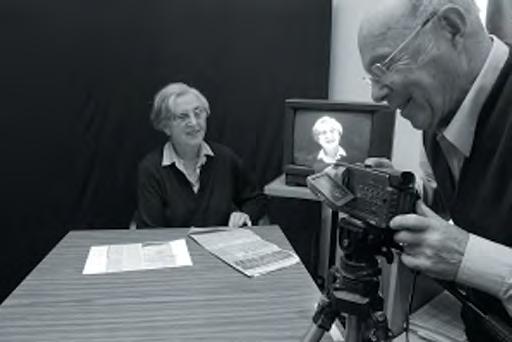
If you would like to give your testimony or know of someone who is interested in giving a testimony, contact Phillip Maisel. Phone: (03) 9528 1985 or email: testimonies@jhc.org.au
now doing to the evangelical Christians. It’s no different. It is the same thing. It is happening all over again. It is the Democratic Congress, the liberal-based media and the homosexuals who want to destroy the Christians. Wholesale abuse and discrimination and the worst bigotry directed toward any group in America today. More terrible than anything suffered by any minority in history.’
Even the use of the term the ‘Silent Holocaust’ by respected US spiritual leader, Rabbi Ephraim Buchwald, has attracted criticism. Rabbi Buchwald has referred to Jewish assimilation as the Silent Holocaust. This, it is argued, is a valid comparison with the Holocaust because assimilation is the leading cause of the reduction in western societies of Jewish populations. Adam Keller, editor of The Other Israel, whose parents barely escaped with their lives during the Holocaust while many of their relatives perished, argues that there is no equivalent between assimilation, which is based on choice, and systematic genocide.
Why should we care about the Holocaust being exploited in this fashion? I would argue that when an argument of moral equivalence is made between the Holocaust and the cause of the moment then the Holocaust is trivialised. A former Israeli Education Minister expressed it pithily. Such comparisons, he wrote, are ‘an insult to, and desecration of the Holocaust victims’ memory’.
Chris Dargan works as a volunteer in the Jewish Holocaust Centre library.

JHC Centre News 24 JHC Centre News 24
Genocide in the shadows: engaging with the Darfur Australia Network
 Adam Brown
Adam Brown
Over the years, the JHC (Jewish Holocaust Centre) Film Club has been privileged to learn from stories of genocides other than the Holocaust. Yet while these stories are different, the traumatic memories of survivors of genocides other than the Holocaust also share important similarities to the Jewish experience: they are memories of loss, of injustice, and of hope. In November 2013, two survivors of the Cambodian genocide – Nath In and Sophie Teng-Purvis – provided a moving close to the year’s film screening events when they spoke to the Film Club’s audience about their experiences under Pol Pot and the atrocities of the Khmer Rouge. The film shown that night was a 2009 documentary called Enemies of the People, which explores the motivations and behaviours of perpetrators of genocide, and highlights the ongoing and unresolved issues that follow mass murder. More recently, in May 2014, a screening of the documentary Sand and Sorrow focused on the genocide in Darfur – a genocide that has overwhelmingly remained in the shadows of western consciousness.
The powerful imagery of both films, which include drawings of atrocities by children too young to have to know of such things (much less witness them firsthand), and the moving accounts of survivors both on-screen and in person, made for a very special experience. Given that any description I could offer would only be very poorly rendered in words, it is more fitting to transcribe a short passage spoken by Eltayeb Ali. Born in 1977, Eltayeb attended university in Khartoum and obtained a Bachelor of Accounting degree, before returning to his hometown of Tawila to serve as a volunteer teacher. Speaking of his subsequent experiences, Eltayeb said:
My life changed when the Janjaweed and the Sudanese government attacked the town. During this time, they killed many people, raped many women… they burnt houses, and stole many things. And we were forced to flee our home and live in Internally Displaced Persons camps for many years. Afterwards I decided to go to Khartoum to study, but in Khartoum I faced many problems because the government attacked the people who came from Darfur… So I was forced to leave because of this discrimination and I feared for myself. I found help from one of my relatives in Khartoum and he got me a visa to go to Indonesia. I stayed there, in Indonesia, for two months, but it was very hard… because of language barriers and I was alone with no support.
Eltayeb left for Malaysia, where he registered as a refugee under the UNHCR (United Nations High Commissioner for Refugees) program. Yet here Eltayeb experienced further racial discrimination. Returning to Indonesia, Eltayeb boarded a boat for Australia. The boat was intercepted by the Navy, and Eltayeb was interned for some time in a detention centre in Darwin. He now lives in Melbourne.
Subject to an attitude best summed up as ‘out of sight, out of mind’, the ever-shifting attention of a frantic 24/7 news cycle implicitly positions the continued suffering of countless civilians as ‘yesterday’s news’. Sand and Sorrow was first released in 2007, although as Guna Subramaniam – one of the speakers who visited the JHC Film Club –said, the film is just as relevant now, because for so many people remaining in Darfur the situation is just as tenuous as it was during the peak of the violence. Mr Subramaniam was joined on the evening of the screening by two survivors of the genocide, Eltayeb Ali and Mohamed Khalil, who spoke to the Film Club’s audience, which included a number of volunteers of the Darfur Australia Network (DAN). Part of a new documentary being made by Mr Subramaniam in collaboration with various members of the local Sudanese community was also screened on the night.
Ironically, Eltayeb, who escaped genocide to arrive in Australia by boat a few years ago, may not have been able to do so under the Australian Government’s current policy of ‘turn back the boats’, revealing that the implications of local actions can be entwined with catastrophic (even genocidal) events that occur on the other side of the globe. Yet at the film screening, Eltayeb did not dwell on this aspect of his story, preferring to draw attention to the continuing crisis in Darfur, where according to recent United Nations estimates, more than 320,000 more people have been displaced this year alone. As Eltayeb noted, ‘This number is as bad as when the war was at its peak in 2003 and 2005. Sadly, most of those people are children.’ Widespread violence continues to be perpetrated by militia units that are often made up of former Janjaweed members. People continue to suffer. The west continues to refuse to see.
For further information or to support the Darfur Australia Network, please visit http://www.darfuraustralia.org/
Please visit the Jewish Holocaust Centre website jhc. org.au or phone the Centre on (03) 9528 1985 for further information about the JHC Film Club.
JHC Centre News 25
(l-r) Guna Subramaniam, Eltayeb Ali, and Mohamed Khalil
JHC Social Club
Barbara Sacks
The monthly meeting of the Jewish Holocaust Centre (JHC) Social Club continues to be a highlight for Holocaust survivors, volunteers and guides, and their friends. Over the past months we have had a variety of informative and entertaining speakers who always ask interesting questions and generate animated discussions.
Jamie Hyams is a senior policy analyst at the Australia/ Israel & Jewish Affairs Council, (AIJAC), the premier public affairs organisation for the Australian Jewish community. He is also a councillor on the Glen Eira City Council and was Mayor in 2012 and again in 2013. Involved in his work in analysing and monitoring developments in the Middle East, Asia and Australia, Jamie gave a stimulating address on ‘The Middle East in Turmoil: An Analysis’.
Another guest was Raphael Aron, Director, Cult Consulting Australia, who spoke about ‘Jewish Drama in Real Life: Drawing Inspiration from Adversity’. Active in this field for over 30 years, the author of five books, an advisor to government and an expert witness to the judicial system in Australia and overseas, Raphael is an outstanding communicator who gave us his unique insights into a range of socially relevant subjects.
Genia Janover, who is the daughter of Holocaust survivors, served as principal of Bialik College for 20 years. Since retiring from Bialik, Genia has been appointed to the boards of several leading schools and has received numerous prestigious awards for her contribution to Jewish education. State-of-the-art facilities, cutting-edge educational programs and an exponential growth in enrolments marked her time at Bialik, and Genia gave a fascinating glimpse into her stellar career in her address titled ’45 Years of Jewish Education: My Personal Journey’.
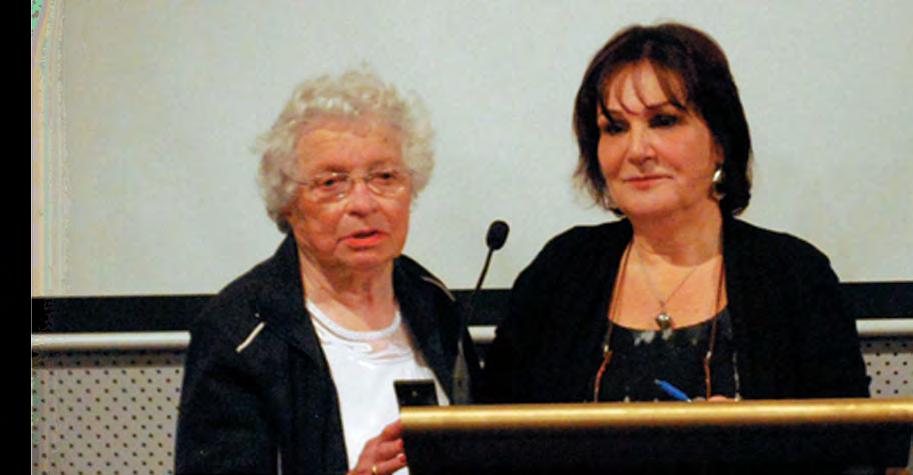
Dr Dvir Abramovich, who spoke about ‘Old Poisons in New Bottles: The New Antisemitism and the War Against Israel’, is chair of The B’nai B’rith AntiDefamation Commission, the Israel Kipen Lecturer in Hebrew Studies and Director of the Program in Jewish Culture and Society at The University of Melbourne. Dr Abramovich is well qualified to speak about recent developments, both in Australia and overseas. His address generated so much discussion that he has promised to come back again to address us.
Bram Presser, a lawyer, writer, musician and community activist, spoke about ‘In search of the Talmudkommando’, the nickname given to a small group of distinguished Jewish scholars in the Theresienstadt Concentration Camp, hand picked by the Nazis to catalogue the precious books stolen from around occupied Europe.



The club is gaining in popularity and we are now attracting between 60 and 70 people regularly. All are welcome to join us for bagels and coffee, and for stimulating and lively discussion. We meet monthly on Thursday mornings at the Jewish Holocaust Centre.
For further information about the JHC Social Club, please contact Barbara Sacks on 0404 224 498.
JHC Centre News 26
Raphael Aron
Dr Dvir Abramovich
Bram Presser
(l-r) Saba Feniger and Genia Janover
Friends of the Jewish Holocaust Centre

Goldie Birch
The Friends of the Jewish Holocaust Centre (JHC) played an important role in ensuring the success of the Centre’s 30 th anniversary gala dinner held in May. Our members invited their friends to make up tables, the Friends Committee assisted with decorating tables and welcoming guests on the night and, at the conclusion of the official proceedings, we collected pledge forms for the appeal. We are delighted that the evening was so successful, both socially and financially.
In June, Friends presented a special film screening of Grace of Monaco at the Classic Cinemas, with the funds raised going to the Jewish Holocaust Centre.
On behalf of the Friends of the JHC, I I hope you had a very happy and healthy Pesach.
Student creates artwork inspired by meeting a Holocaust survivor
The Friends of the Jewish Holocaust Centre plays an important role in providing financial support to the Centre through membership subscriptions, raffle book sales, sales of the Entertainment Book and social fundraising functions.
To become a Friend of the Jewish Holocaust Centre, simply download and complete the form from www.jhc.org.au/friends-of-the-jhc.html
For further information please contact Goldie Birch on (03) 9528 1985 or email goldiegb@bigpond.net.au.
Kyle Morrish, a Year 10 student at Cheltenham Secondary College, visited the Jewish Holocaust Centre in August last year. The visit inspired him to create a sculpture, which he presented to the Centre in December. In Kyle’s words:
In August 2014 I visited the Jewish Holocaust Centre and I was honoured to speak with a Holocaust survivor. The visit had a profound impact on me. I was so inspired that I decided to design and create a memorial, which I have called Memories.
The physical weight of Memories signifies the heaviness and burden felt by all the people who witnessed the atrocities, all who lost their lives and all who survived. The Star of David which shines brightly reflects the spirit of the Jewish people during the hardest of times.
The rustic and dirty appearance of the sculpture’s base signifies how terrible and unbearable the Holocaust must have been. The only part of the sculpture which is polished and pristine is the Star of David, surrounded by the rustic barbed wire and fencing representing the concentration camps. The Star of David is elevated above all the awfulness and hate. This was a key factor in the design of Memories, which I dedicate to the six million Jews who perished.
(l-r) Moshe Fiszman, Kyle Morrish, Irma Hanner, Willy Lermer and Joe De Haan
FRIENDS
27 JHC Centre News
Become a Friend of the Jewish Holocaust Centre. Support the activities of the Centre.
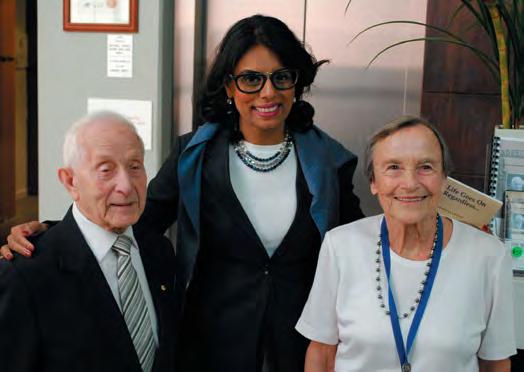
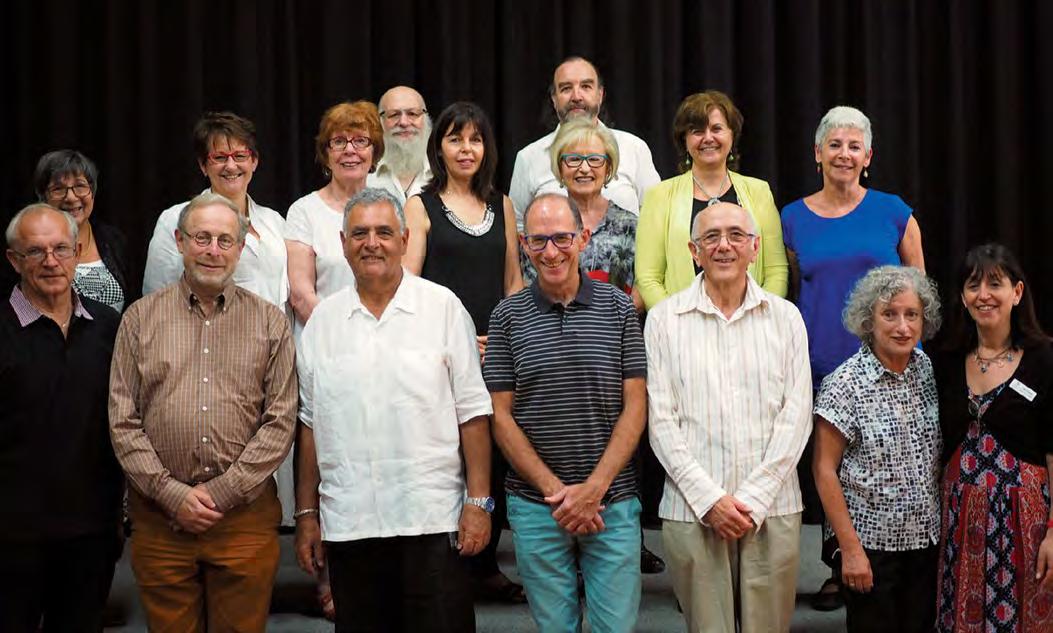
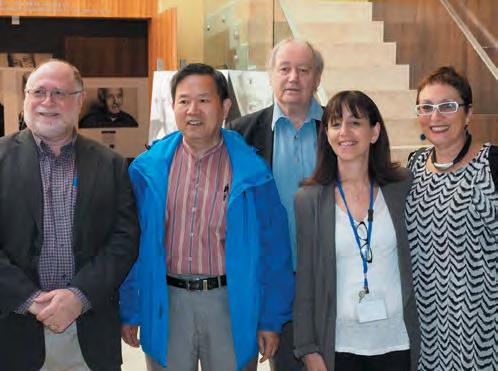



SEEN AROUND THE CENTRE 28 JHC Centre News
(l-r) Abram Goldberg OAM, Associate Professor Qanta Ahmed and Sarah Saaroni
Graduates of the JHC Holocaust Education Course 2014 together with lecturers Bernard Korbman OAM, Dr Bill Anderson and Lisa Phillips
(l-r) Kevin Russell, ‘Uncle Boydie’ Alfred Turner and Cr Nam Quach, Mayor of City of Maribyrnong
(l-r) Warren Fineberg, Professor Cho, Michael Cohen, Lisa Phillips and Leah Justin
Sonia Wajsenberg
(l-r) Nechama Bendet, Sam Tatarka, Marlo Newton, the Hon David Southwick MP, the Hon Matthew Guy MP, Alan Goldstone, Clem Newton-Brown
Photo: Peter Haskin
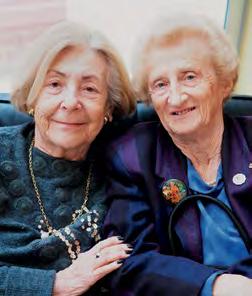
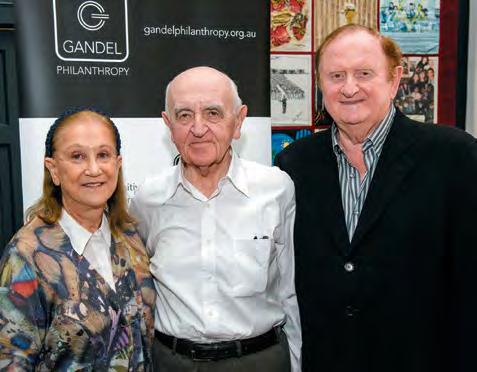

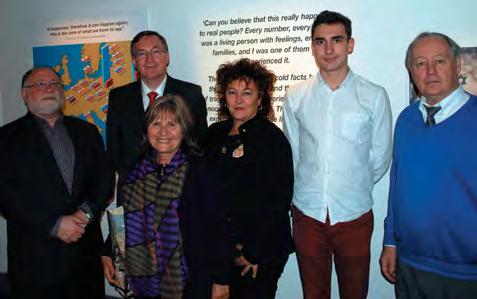

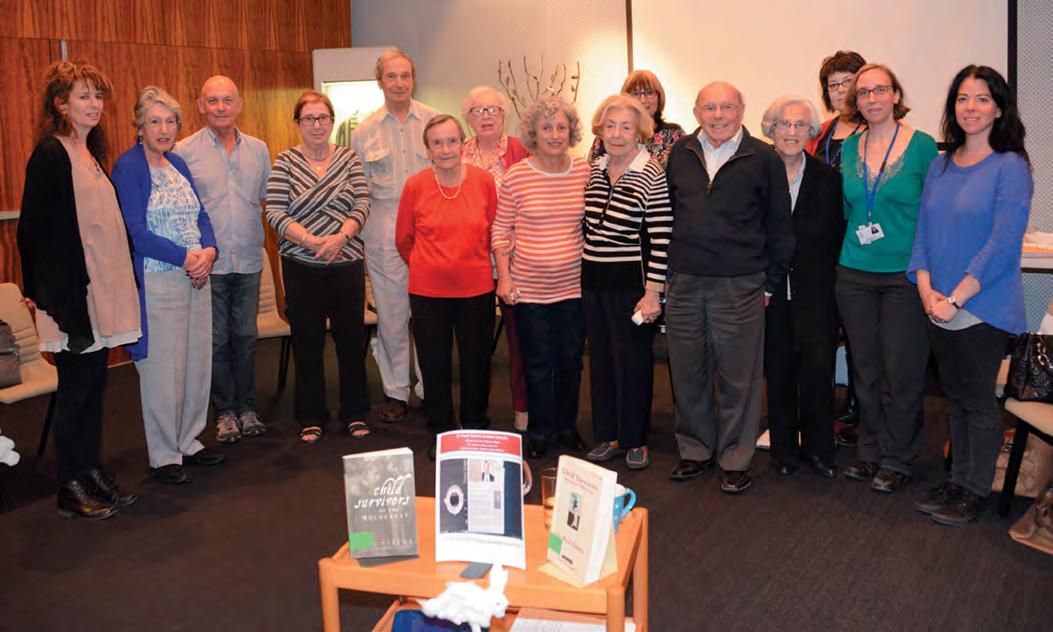 (l-r) Lusia Haberfeld and Ursula Flicker OAM
(l-r) Maria Lewit OAM and Agata Lagiewka
(l-r) Lusia Haberfeld and Ursula Flicker OAM
(l-r) Maria Lewit OAM and Agata Lagiewka
JHC Centre News 29
(l-r) Pauline Gandel, Professor Louis Waller AO and John Gandel AO
(l-r) Pauline Rockman OAM, Darren Turner, Viv Parry and Elly Brooks
(l-r) Warren Fineberg, Josef Reichhardt, Deputy Head of Mission for the Federal Republic of Germany, Mary Slade, Pauline Rockman OAM, Adam Thalhammer and Michael Cohen
Photo: Joe Lewitt
Dr Paul Valent with members of the JHC Book Club
Cataloguing the Jewish Holocaust Centre collection: a personal reflection
Jayne Josem
Imagine walking into a room and finding 100 boxes. The first one is filled with documents, photos, magazines, letters and newspaper articles. The next has some textiles, the next coins and medals and the next household items. What is their significance? To whom do they belong? Without accompanying information, a photo or a cup and saucer are totally meaningless, and a letter from a brother to a sister is surely only relevant to that family. Why keep them?
Thankfully there is a register in this room and each item or set of documents has a story attached, although some are more complete than others. The stories are incredible; most are sad and moving, yet fortunately some are uplifting. Trying to discover more about the ones with little information is intriguing detective work. People offer to help and are so captivated that they come week after week, voluntarily, asking for nothing in return.
This is the story of the JHC collection of documents and artefacts, material donated by survivors and their descendants since 1984. It is a treasure trove of evidence of Jewish life in Europe before, during and after the Second World War, and of the survivors who came to Australia to begin a new life. It is a powerful repository of evidence of atrocities committed by the Nazis and their collaborators from 1933 to 1945, as well as fragments that illustrate the power of non-Jews who risked their lives to help Jewish people.
The Ursula Flicker Collection is named in recognition of Ursula’s tireless efforts to establish this collection and ensure it was properly housed and catalogued. Initially on paper, in 2005 Ursula and her assistant Claude Fromm began creating an electronic catalogue that, with the help of a team of volunteers, took many years to develop. When I began managing the collection in 2010 we received further advice from conservation specialists and in 2012 commenced a project to rehouse the entire collection. During this process we have been reviewing the catalogue entries and conducting further research into items with little provenance. The work is slow but, beginning with the first box, I have studied each item, decided on the best housing, rewritten the catalogue entry and, where necessary, asked a member of the team to conduct further research into its history.
While it is tedious work, it is highly rewarding. It is comforting to know that when we have finished, I will have touched almost every item in the collection. And many of these items have touched me and other members of the team.
Last week I opened box number 49 that contained items donated by a friend of a Jewish couple, Holocaust survivors who had married in Australia. As they had no children together, their friend donated some precious items relevant to the Holocaust to our collection. The most
intriguing items relate to the wife. I would like to leave you with her poignant story...
Elisabeth lived in Vienna before the war and was forced into marriage with a man she did not love. They had a daughter, Eva, but when Eva was three years old, Elisabeth, suffering from depression and deeply unhappy in the marriage, moved back to her parents’ house. Her husband denied her access to Eva, exacerbating her depression to the point that she attempted suicide. In despair, her mother took her to a sanatorium for help and she was there in 1938 when Hitler annexed Austria. Elisabeth’s condition became worse, not knowing where Eva was and fearing for her safety. Elisabeth’s mother, perhaps knowing of the Nazi euthanasia program for the mentally ill, realised she had to find a safer place for Elisabeth. She contacted Giuseppe, an Italian non-Jewish friend, now a High Court judge, who had loved Elisabeth. She asked him to come to Vienna urgently, which he did. Together Elisabeth’s mother and Giuseppe went to the sanatorium and, each taking one arm of the heavily sedated Elisabeth, marched her across the road to a church where she and Giuseppe were married.
Giuseppe and Elisabeth left for Italy where, surrounded by Giuseppe’s loving family, Elisabeth began to feel better. She was able to return to Vienna and bring her mother to Italy where they remained, protected by Giuseppe’s family, for the duration of the war. Elisabeth learned that her ex-husband had taken Eva to safety in Scotland. Eva had been told that her mother had died. Despite being reunited after the war, Elizabeth and Eva’s relationship never recovered from the disruption brought on by Elisabeth’s depression and the war.
At the end of the war Giuseppe agreed to a divorce on the grounds that Elisabeth had been mentally incapacitated when they married. They remained good friends. Elisabeth married again, came to Australia, divorced and finally married her husband with whom she lived for many years.
In the midst of Elizabeth’s personal anguish, the Nazis had other designs for the ‘undesirables’, be they Jews or those with physical or mental handicaps. Had it not been for her mother’s resolve and her upstanding Italian friend, Elizabeth would surely have fallen victim to the Nazi euthanasia program, even before ‘qualifying’ for the ‘Final Solution’.
Uncovering powerful stories like these every week sustains the team, since we also need to undertake more tedious tasks in documenting this important collection.
Jayne Josem is Jewish Holocaust Centre Curator and Head of Collections.
JHC Centre News 30 STORIES FROM THE COLLECTION
New acquisitions
Claude Fromm
The following are new additions to the Centre’s collection from July to December 2014:
1 Document translated from Hungarian into German by husband of donor describing his aunt’s concentration camp experience.
Donor: Danuta Mendelewicz
2 Documentation relating to the donor’s parents and grandparents experiences during the Second World War.
Donor: Mark Fajgman
3 Testimony by Jozeph Koopman titled A handful of men: Notes of an Auschwitz survivor
Donor: Ronnie Israel
4 Correspondence dated 1938, including letters, envelopes and photos, between donor’s mother in Melbourne, Australia and her pen pal in Sudetenland, Germany.
Donor: Catherine Swan
5 Letter of recommendation for donor’s mother, Star of David worn by donor’s father, and badge with paper citations issued to Vera Lipshutz by the Minister of Defence in Israel for her work against the Nazis.
Donor: Thomas Lipschutz
6 Bound copies of the Yiddish newspaper Yiddishe Bilder issued before the Second World War.
Donor: Meerkin and Apel, Lawyers
7 Correspondence dated from 1939 to 1940s between donor’s father John Breit, who was sent on the Kindertransport to the United Kingdom, and his parents who remained in Vienna.
Donor: Sandy Breit
8 Book titled Lest We Forget: the Horrors of Nazi Concentration Camps Revealed for All Time in the Most Terrible Photographs Ever Published, published by Daily Mail, 1945.
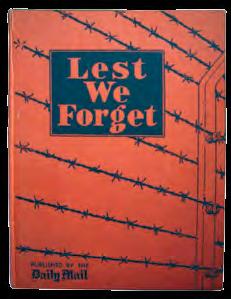
Donor: Paul Manners
9 Documents relating to the donor and her husband’s experiences during the Holocaust.

Donor: Jadwiga Wiener
10 Book titled Atrocity propaganda is based on lies, say the Jews of Germany themselves written by Jakow Trachtenberg.
Donor: Peter Rice
11 DVD titled Personal Holocaust Experiences Mr Nosson Werdiger recorded live at Yeshivah Shul on 15 July 2013.
Donor: Nathan Werdiger
12 Documents relating to the donor and her family during the Holocaust in Hungary.
Donor: Agotha Szigeti
13 Mounted yellow star with wording Juif worn by the Jews of France during the Holocaust.

Donor: Lea Teller
14 Photographs taken before and after the Second World War and business cards relating to Michael and Lova Frydman and their family from Miedzyrec, Poland. After the war they migrated to Australia and joined other survivors from Miedzyrec to establish a society. The photos relate to the group’s association with the Kadimah Cultural Centre and National Library.
Donor: Helen Marlow
15 Large drawing made by an inmate of Theresienstadt Concentration Camp.

Donor: Evelyn Dalpas
The Jewish Holocaust Centre (JHC) collection is a vital repository of Holocaust-era material. Artefacts and documents are carefully catalogued and stored in a state-of-the-art temperature-controlled facility to ensure their preservation for future generations. The JHC invites members of the public who have precious items relating to the Holocaust to consider donating them to our collection for safekeeping.
JHC Centre News 31
COLLECTIONS
Daily Mail book published in 1945
Yellow star worn by French Jews
Israeli citation for Vera Lipshutz’s work against the Nazis
Drawing by an inmate of Theresienstadt Concentration Camp
A generous gift
to the Jewish Holocaust Centre for the middle school education program
Zac Miller, who celebrated his bar mitzvah recently, donated generously to the Jewish Holocaust Centre Foundation instead of receiving presents for his bar mitzvah.
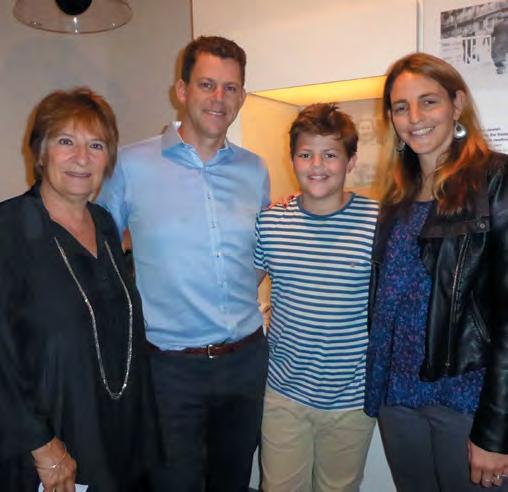
Zac is not new to philanthropy. As one of his friends said, ‘Zac loves other people and is very generous. He spends quite a bit of his spare time doing Kids in Philanthropy (KIP) stuff. He recently slept out at Fed Square and helped KIP raise $30,000 for homeless kids, and he does a lot of other charity work in his spare time – garage sales, making Shabbat meals for poor Jewish families, packing gifts for underprivileged kids. Pretty special.’
With that kind of background, it is not surprising that Zac decided to request donations rather than receive presents for his bar mitzvah. His decision to donate to the Jewish Holocaust Centre Foundation came about after he visited the Centre to see the exhibition ‘Anne Frank – A
History for Today’, which made a huge impact on him. As Zac said at his bar mitzvah celebration: ‘Last year I went to the Anne Frank exhibition at the Holocaust Centre and thought it was really educational and I learnt a lot. I realised that the Centre is important for both Jewish and non-Jewish students. Hearing from survivors teaches young people about the danger of hatred, which is so important today.’
Zac’s donation is earmarked for the Centre’s new middle school program, ‘Hide and Seek’. The Jewish Holocaust Centre thanks Zac sincerely for his thoughtful and generous gift.
Celebrating her bat mitzvah by giving to the Jewish Holocaust Centre

Rachel Cymbalist learnt about the Holocaust in her Jewish Studies class at Bialik College. However, she already had some knowledge of the Shoah on a more personal level as three of her grandparents are Holocaust survivors. In addition to what her grandparents have chosen to tell her, Rachel’s paternal grandmother, Susie Cymbalist, has written a memoir titled Susie’s Story: Surviving in Budapest which provides a more detailed account of her wartime experiences.
Rachel’s mother, Michelle Meisels, remembers that as a ten or 11-year-old, her mother called her into the kitchen to hear for the first time her story of survival. From generation to generation, this transmission of stories across generations is important in any culture, but in the Jewish community, remembering and honouring victims of the Holocaust is of special significance.
Following a discussion Rachel had with her mother Michelle, she decided to ask family and friends attending her bat mitzvah celebration to donate to the Jewish Holocaust Centre in lieu of gifts. The Jewish Holocaust Centre thanks Rachel for her kindness and generosity.
32 JHC Centre News
(l-r) Helen Mahemoff, Quentin, Zac and Amanda Miller
Rachel Cymbalist and Warren Fineberg
Mazal tov to Pauline Rockman OAM, recipient of the ASPJ 2014 Henryk Slawik Award
Jewish Holocaust Centre President, Pauline Rockman, was presented with the Henryk Sławik Award by the Australian Society of Polish Jews and their Descendants in October 2014. The award is presented annually in honour of the life and deeds of Henryk Sławik, who saved over thirty thousand lives, including five thousand Jews, in occupied Hungary during the Second World War. The award honours those who have worked towards enhancing mutual respect and understanding between the Polish and Jewish communities.
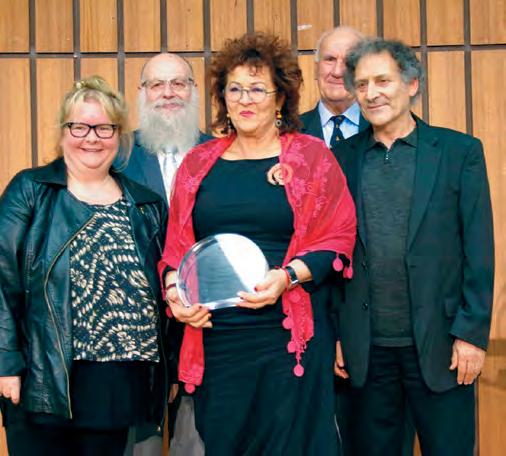
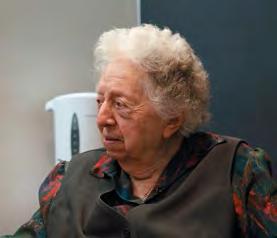
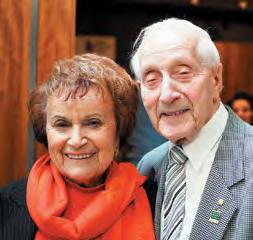
Pauline was presented with the award by actor Magda Szubanski, whose wish to meet Polish Jewish descendants and compare their stories with those of her own Polish family had led to long conversations with Pauline. Having visited Poland many times for over a decade, Pauline is an advocate for Polish-Jewish dialogue. Guest speaker at the presentation event was writer Arnold Zable who spoke on the theme ‘Towards a Better Society’.
Mazal tov Pauline!
Mazal tov to Saba Feniger, Abram Goldberg OAM, Maria Lewit OAM and Freda Schweitzer

The Jewish Holocaust Centre (JHC) is delighted to welcome four new members to our 90 th Birthday Club.
We congratulate long-time volunteers Saba Feniger, Abram Goldberg, Maria Lewit and Freda Schweitzer who have worked tirelessly for the Centre over many years.
We wish them all Mazal tov!

JHC Centre News 33
Cesia and Abram Goldberg OAM
Freda Schweitzer (r) with Irma Hanner (l) and Rosa Krakowski (c) Maria Lewit OAM
(l-) Magda Szubanski, Bernard Korbman OAM, Pauline Rockman OAM, Dr George Luk-Kozica, Honorary Consul General of Poland, and Arnold Zable
Saba Feniger and family
Photo: Joe Lewitt
Maria Censor: a life in three chapters Cara Bodsworth
We always knew there were several lives that our Baba had lived. In fact there were many names and identities that she went by, but there were three distinct chapters to her life.
The first chapter of her life sounded like heaven, surrounded by loving parents, a large family, a charmed life of summer holidays in Paris, Biarritz and Vienna, but most importantly to Baba, a life filled with love and school. This life ended, like for so many, when the Second World War came to Poland. This was the second chapter. Her wartime years are well documented in her book, Letters to My Mother. There were too many hardships to mention, too many strokes of luck to be believed, too many identities, just so many stories. But the one that stayed with us the most was her great sadness that her parents, brother and nephew had no grave, no funeral and had perished.
The Baba that her grandchildren knew – in her third life in Australia – was happy and loving. In fact her love was limitless, unconditional and truly appreciated. She was always doting on us, praising her children and feeding her beloved husband, Zygmunt, our Dziadzia. Her dogs were the next receivers of this over-indulgence, and eventually her great-grandchildren. In my early memories she was full of life, much younger and more active than other grandmothers. She loved to work, to help and to be useful. Never idle. I took these things for granted because I knew her only one way, but rereading her amazing stories, it became apparent she was the same in all of her lives.

In Australia, she was blessed with an adoring husband and beautiful children, but the long-yearned-for family was not enough for her. She needed to be useful. She participated in a highly successful fashion career. Both Dziadzia‘s leather business and her shops gave her an outlet for her energy and drive. Being in the fashion business also connected her to her genes and family trade in Poland before the war. That must have given her some comfort.
She then re-invented herself as a teacher. The war had not permitted her an education, or many other things, so she went to teachers college and then into practice. She then transferred these skills to be a highly regarded Weight Watchers lecturer, teaching the people of Toorak how to reduce their calorie intake. As we walked around Toorak Village we chatted with many a round person, so I am not sure she was that good at this job!
Her final profession was that of a historian and researcher. Her voluntary work at the Jewish Holocaust Centre on the great children’s scholar Janusz Korczak was a great gift to the world. She pursued his work with passion and, on reflection, with patriotism, so that a great Pole’s work would be recognised and the world would know of the brilliant minds that were in Poland before the life was ripped out of her country.
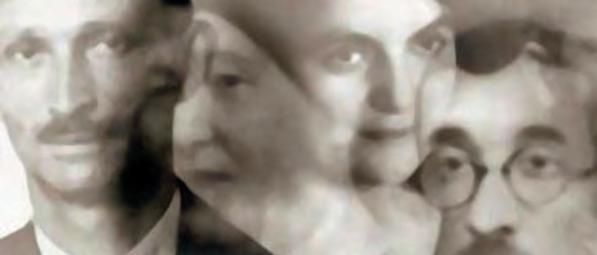
Become a Partner in Remembrance
The Jewish Holocaust Centre Foundation ensures the continued existence of the Centre and supports its important work. Funds raised through the Foundation are invested, with the earnings providing an ongoing source of income for the Centre to support its operations and programs into the future. For more information on how you can help support the Foundation and how your support will be recognised, please contact Helen Mahemoff, Chair of the Foundation on 0417 323 595 or Email: jhcfoundation@bigpond.com.
JHC Centre News 34
OBITUARY
Cara Bodsworth is Maria Censor’s granddaughter. This is an edited version of the eulogy she gave at Maria Censor’s funeral.
Maria Censor
Sonia Wajcman: a woman of valour
Bernard Korbman OAM
Sonia Wajcman was a woman of action. She never allowed circumstances to crush her spirit and dictate her actions. Whatever the situation, Sonia made choices; she took charge.
Sonia was born in Warsaw in 1918. In 1939, she and her then-boyfriend Albin fled to the Soviet Union where they both worked in a timber mill. Sonia and Albin married, and in 1940 she gave birth to their son, Jack. Later that year Albin was arrested and Sonia never saw him again. When the Germans invaded the Soviet Union in 1941, Sonia was arrested by the Russians and she and Jack were sent to prison in Novosibirsk, Siberia. They were released during an amnesty for Polish prisoners announced by General Sikorski in August. Sonia was then sent to work in a kolkhoz, a communal rice farm in Kazakhstan. In 1943 Sonia ran an orphanage for Jewish and non-Jewish children in Ushtobe, in southeastern Kazakhstan.
In 1946, Sonia returned to Poland with the orphans for whom she had cared and established a children’s home for Jewish children in Ziebce, Poland. In 1949 Sonia migrated to Australia.
Within a short period of time, Sonia was involved in the dynamic post-war Melbourne Jewish community and eventually became one of the founding members of the Jewish Holocaust Centre. From the outset, Sonia contributed her time, energy and skills for the betterment


of our community, and also donated financially whenever she could.
There was also another wonderful side to Sonia. She was an elegant woman, a woman of taste, never pretentious and, above all, she had a great sense of humour. In my early years at the Jewish Holocaust Centre, Sonia would entertain me with stories, often in Yiddish, about life in Poland before the war. They were more of a gentle panoramic view of life rather than concentrating on the turbulent and traumatic events of the times. Like a great storyteller, she captured the nuances of the people around her, Jews and gentiles alike, as well as the landscape and surroundings.
To me Sonia personified the duality that is so much part of why we get teary when we hear the song ‘My Yiddishe Momme’. A Jewish mother is often sentimental and sometimes pushy, but scratch the surface and you will discover a ferocious defender of her children, her family and her community. You will discover a woman of amazing strength and resilience who, under the worst possible circumstances, is a doer and a person who will make sacrifices for those in her care.
Sonia was such a woman. Sonia cared for many. Sonia was a woman of valour.
JHC Centre News 35
OBITUARY
Bernard Korbman is the former Executive Director of the Jewish Holocaust Centre
Sonia Wajcman
Births Bar Mitzvah
To Zac Miller on his bar mitzvah
Engagement
To Sara and John Berhang on the engagement of their son Danny to Samantha Cowan
To Cesia Goldberg and Avram Goldberg OAM on the engagement of their granddaughter Natassja Bornsztejn to Dean Kuran
To Tuvia Lipson on the engagement of his grandson Adam Buchbinder to Samantha Blau
To Suzie and Gaby Nozick on the engagement of their grandson Joseph Rogers to Kira Rickards
To David Prince on the engagement of his grandson Noam Kolt to Bat Sheva Sykes
To Frances Prince and Steven Kolt on the engagement of their son Noam to Bat Sheva Sykes
To Frances Ser on the engagement of her son Joel to Ariella Mac
To Lauren Spitalnic on her engagement to David Mayer
Marriage
To Sharon and David Brott on the marriage of their daughter Gabi to Jason McKenzie
To Rosa Freilich on the marriage of her granddaughter Ilana Freilich to Danny Rajch
To Suzie Linden on the marriage of her son Richard Laufer to Michelle Berzon
To Leah and David Shulberg on the marriage of their son Elliot to Karra Jacobson
To Sue and Ron Unger on the marriage of their daughter Rachel to Jeremy Blode
To Clara Weis on the marriage of her grandson Justin Strauch to Kim Mosbach
To Elly Brooks and Alan Reid on the birth of their grandson Tommy Pierce
To Hannah and Mark Fagenblat on the birth of their granddaughter Mia Joel
To Susan and Daniel Feldman on the birth of their grandchildren Scarlett and Felix MacHaines
To Amelia Giligich on the birth of her great grandson Jordan Michaels
To Stephanie Heller on the birth of her great granddaughter Eleanor Heller
To Kathy and Les Janovic on the birth of their grandson Zac Stub
To Susie and Stephen Kleid on the birth of their grandson Eitan Zohar and granddaughter Tali Small
To Silvana Layton on the birth of her granddaughter Abby Grossman
To Tuvia Lipson on the birth of his great grandson Kai Raleigh
To David and Mareike Montgomery on the birth of their daughter Maeve
To Rhonda and Leo Norich on the birth of their grandson Billy Norich
To Susan and John Onas on the birth of their grandson Oz Onas and their granddaughter Summer Blashki
To Suzie and Gaby Nozick on the birth of their great granddaughter Sari Gorog
To Tamara Schneier on the birth of her grandson Elan Scheier
Birthdays
To Judy Rassaby on her 60th birthday
To Jeffrey Mahemoff AO on his 70th birthday
To Adele Pakula on her 70th birthday
To Vivienne Spiegel on her 80th birthday
To Jack Fogel on his 90th birthday
To Kurt Friedlander on his 90th birthday
To Abram Goldberg OAM on his 90th birthday
Condolences
To our Past President Shmuel Rosenkranz on the death of his daughter Judy Goldman
To Caroline and Harry Bryce on the death of their father-in-law and father Zygmunt Bryce
To the family of Maria Censor on her death
To Gerry and Alex Dafner on the death of their mother-in-law and mother Hendel Dafner
To Leon Goldman on the death of his wife Judy Goldman
To Susie and Stephen Kleid on the death of their father-in-law and father Phillip Kleid
To the family of Herbert Leder on his death
To the family of Alex Lenko on his death
To Helen and Jeffrey Mahemoff and Julie and Greg Blashki on the death of their mother and mother-in-law
Renia (Stefa) Rutman
To the family of Ettie Rosenbaum on her death
To the family of Sonia Wajcman on her death
JHC Centre News 36 Mazal Tov
1198 Toorak Rd


Camberwell Vic 3124
Telephone: (03) 9804 0888
Facsimile: (03) 9804 0322
Website: www.morco.com.au

CHARTERED ACCOUNTANTS
Contact – Martin Artenstein
JHC Centre News 37
supporting the Jewish Holocaust Centre
Professional Printing & Finishing For Photographers Proudly
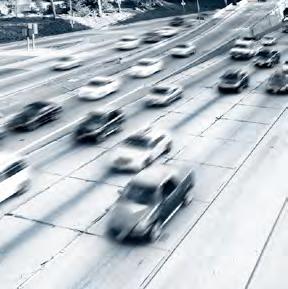

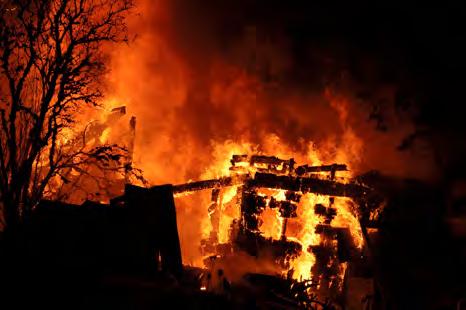



JHC Centre News 38 7331 Scott Winton - Jewish Holocaust Centre ad.indd 1 26/02/2015 11:28 am




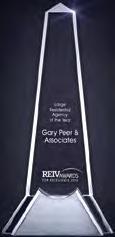
JHC Centre News 39
BALLARAT BENDIGO BERWICK
EAST DONCASTER
ELSTERNWICK
ESSENDON NORTH GEELONG WEST
HAMPTON
HAWTHORN
IVANHOE
MELBOURNE
MOUNT ELIZA
MOUNT WAVERLEY NORTH BALWYN
STORES ALSO IN SYDNEY
FREECALL 1800 800 866 TO ORDER OR TO RECEIVE YOUR MAIL ORDER CATALOGUE www.fellahamilton.com.au
With Compliments
KATZ SILVER LAWYERS
Suite 1, 71 Kooyong Road, Caulfield North 3161
Ph: 8508 8300 Fax: 8508 8399
Conveyancing, Wills & Estate Leases, Litigation and Business Law
ADVERTISING
If you would like to advertise in this section please contact


Reuben Zylberszpic
Email: ReubenZ@jhc.org.au
Phone: (03) 9528 1985

JHC Centre News 40

JHC Centre News 41
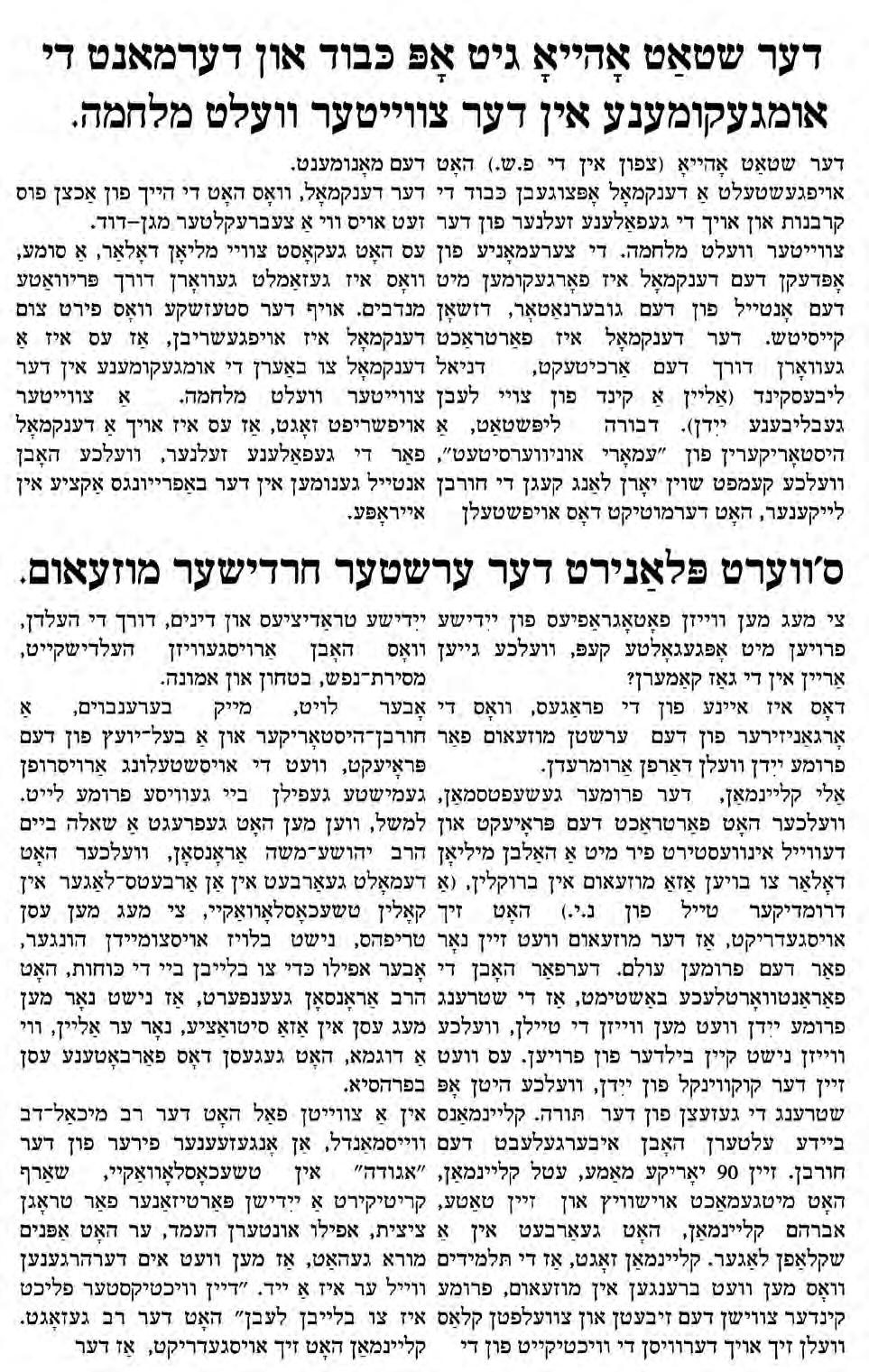
JHC Centre News 42
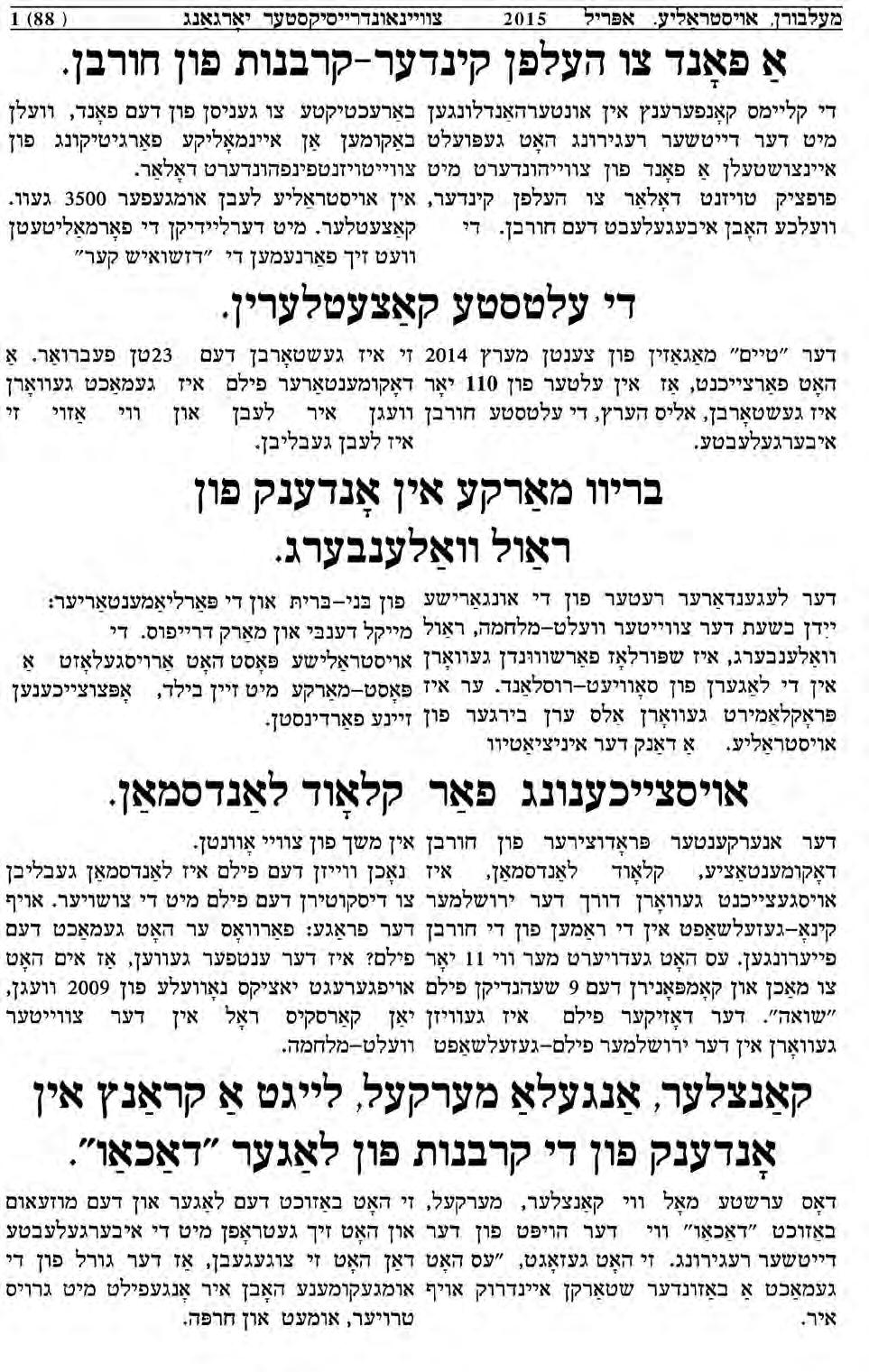
JHC Centre News 43
April 2015 Jewish Holocaust Centre
A CODE OF HONOUR

Muslim Albanians who rescued Jews during the Holocaust
12 March – 26 April 2015




Jewish Holocaust Centre
15 Selwyn Street Elsternwick www.jhc.org.au
“Why did my father save a stranger at the risk of his life and the entire village? My father was a devout Muslim. He believed that to save one life is to enter paradise.”
Alia Sheqer
Public Program
4pm Sunday 19 April
2nd screening of ‘Besa: The Promise’ ( admission $10/$6 ) 4pm – 5pm Sunday 26 April Stories of Rescue ( admission free )
On the final day of the exhibition, Sunday 26 April visit the JHC to hear uplifting stories from the Holocaust. These stories will be told from the perspectives of the rescuers and the rescued.
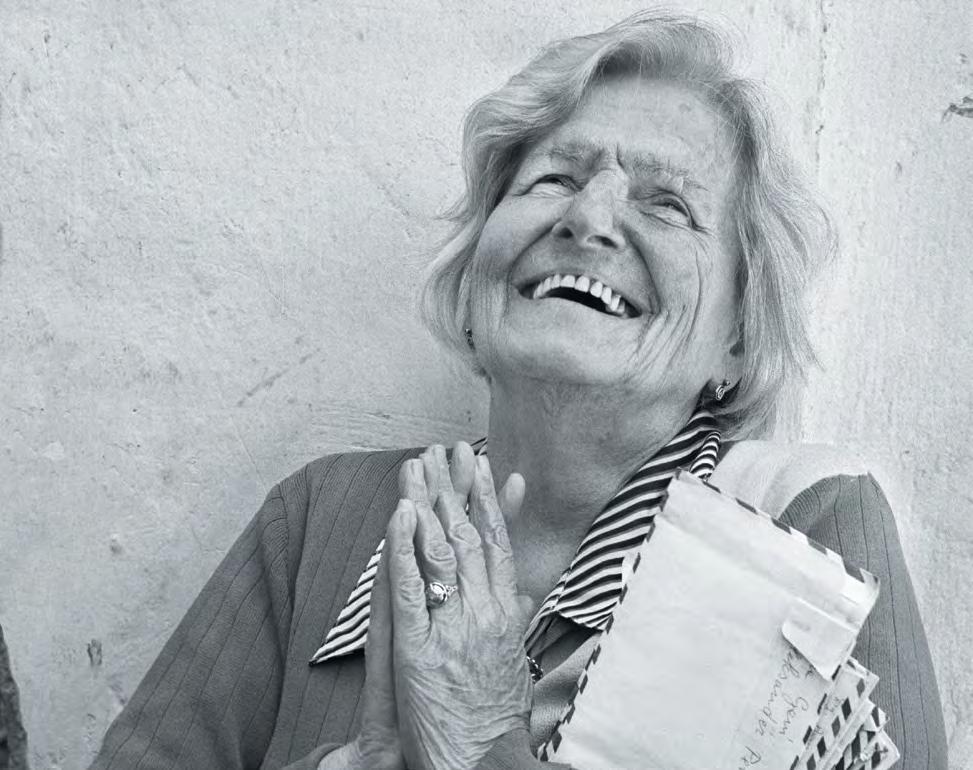
Registered by Australia Post. Publication No. VBH 7236
The Jewish Holocaust Centre in partnership with the Albanian Australian Islamic Society & B’nai B’rith Courage to Care (Vic) presents
A Photographic exhibition by Norman Gershman
This exhibition was created by Yad Vashem, The Holocaust Martyrs’ and Heroes’ Remembrance Authority in Israel. The Jewish Holocaust Centre’s presentation is made possible by the American Society for Yad Vashem.
The Besa exhibition at the Jewish Holocaust Centre is supported by the Victorian Government.

















 Paul Valent
Paul Valent




 Sue Hampel OAM
Sue Hampel OAM




























 Adam Brown
Adam Brown
















 (l-r) Lusia Haberfeld and Ursula Flicker OAM
(l-r) Maria Lewit OAM and Agata Lagiewka
(l-r) Lusia Haberfeld and Ursula Flicker OAM
(l-r) Maria Lewit OAM and Agata Lagiewka



































